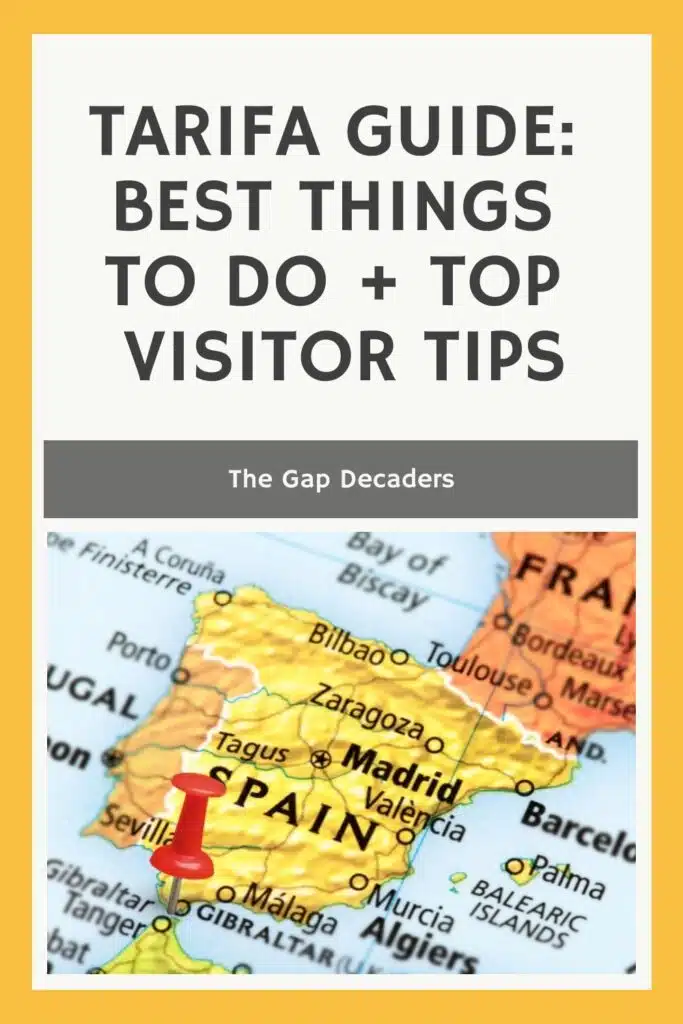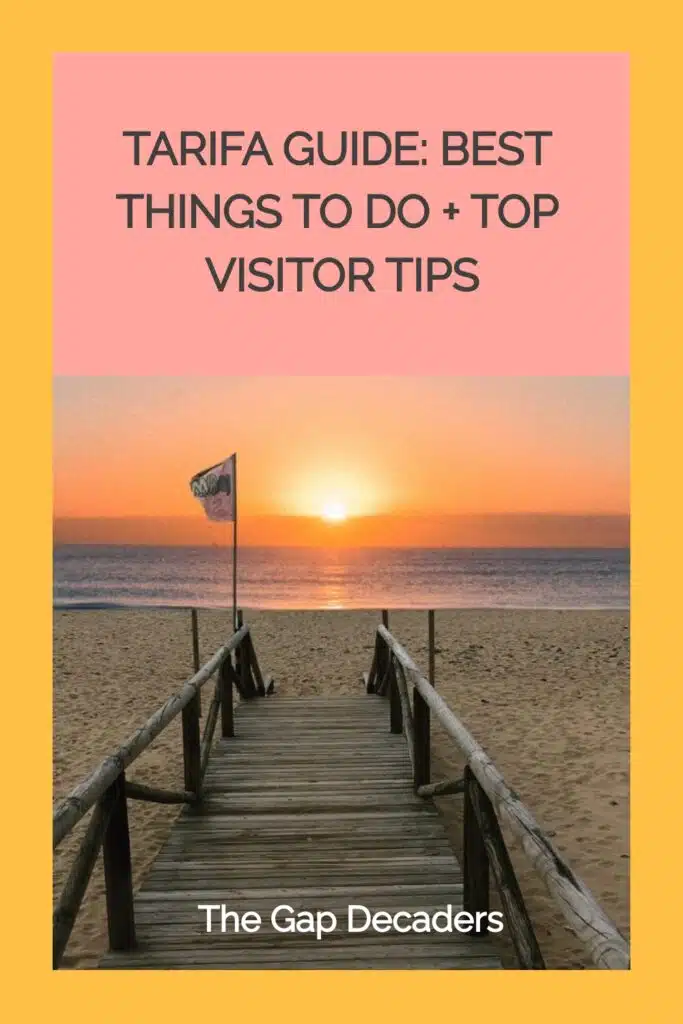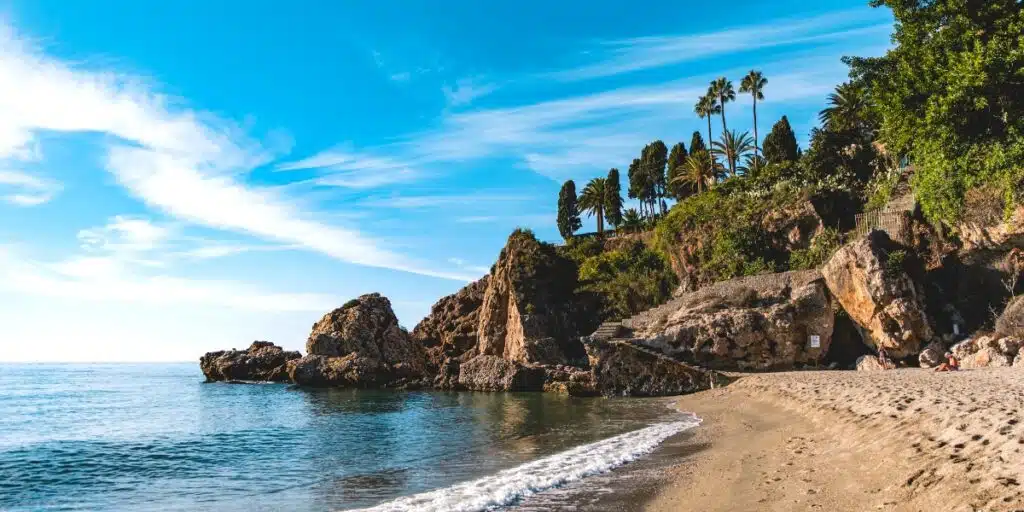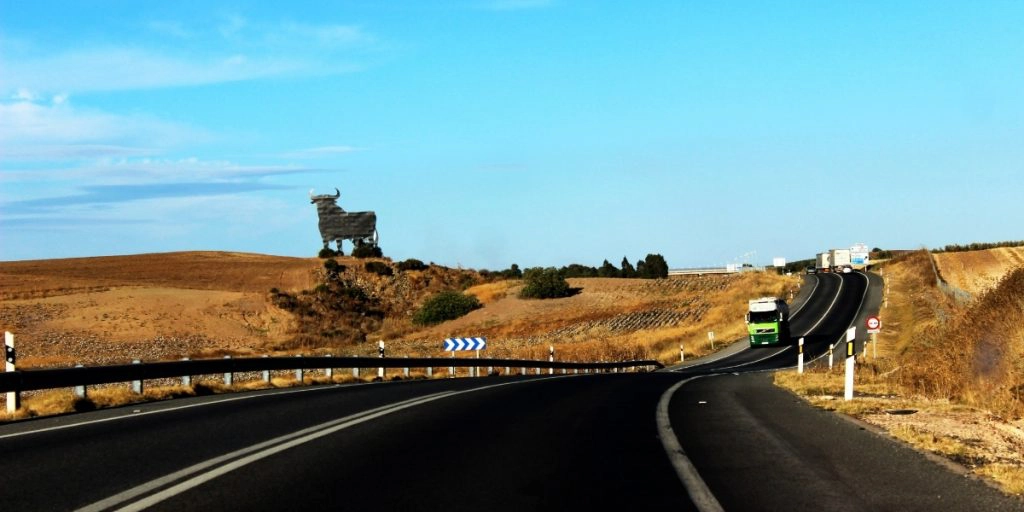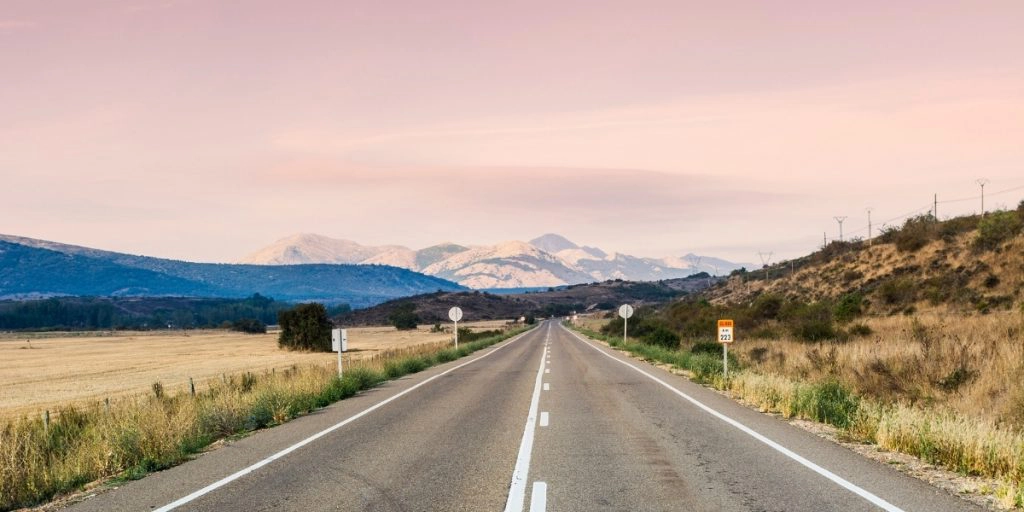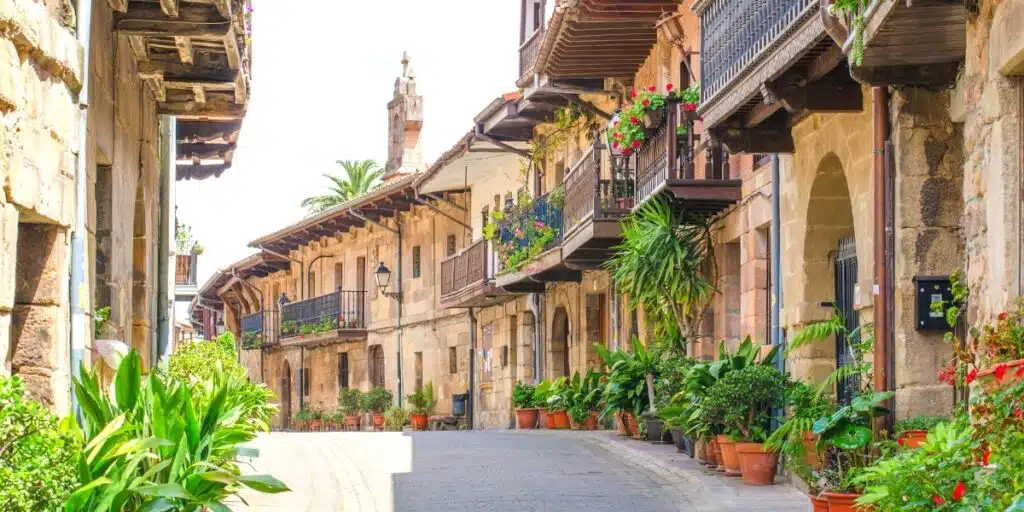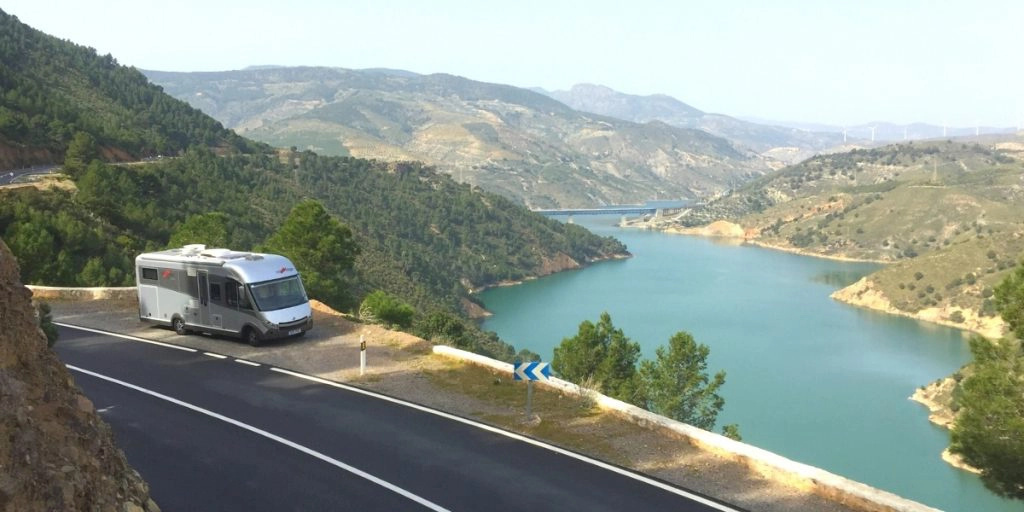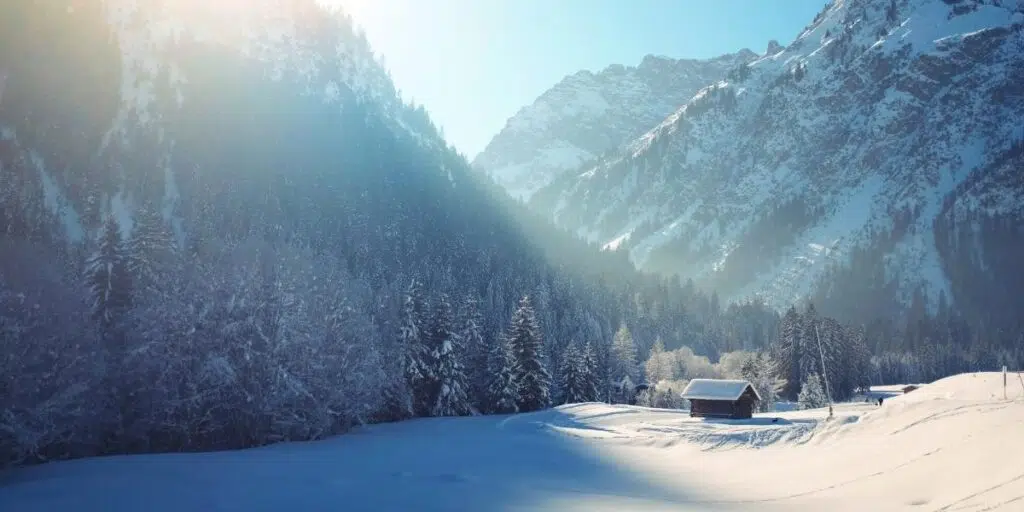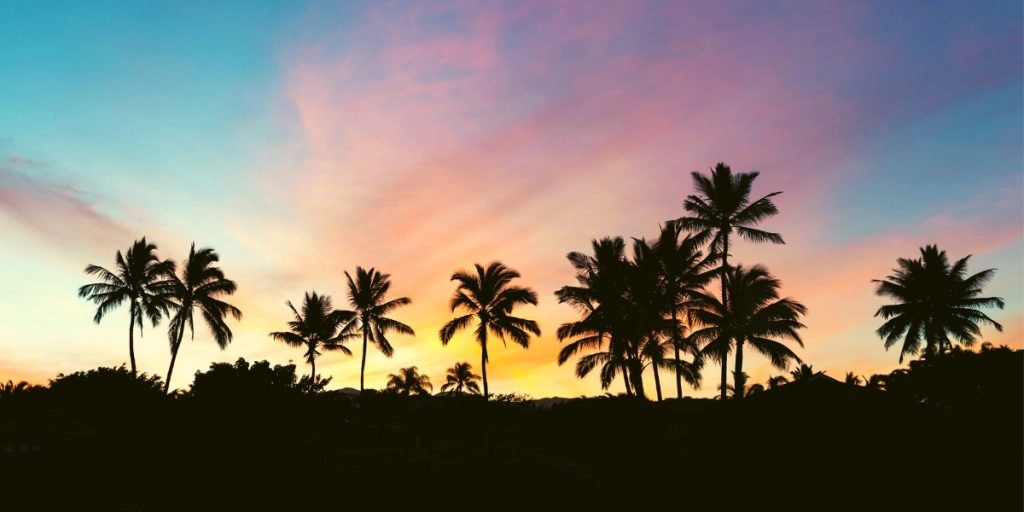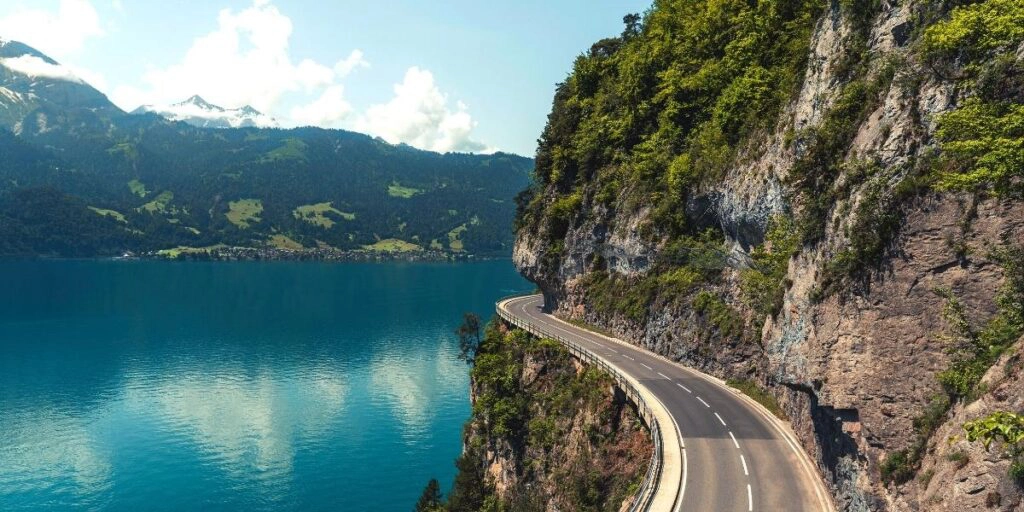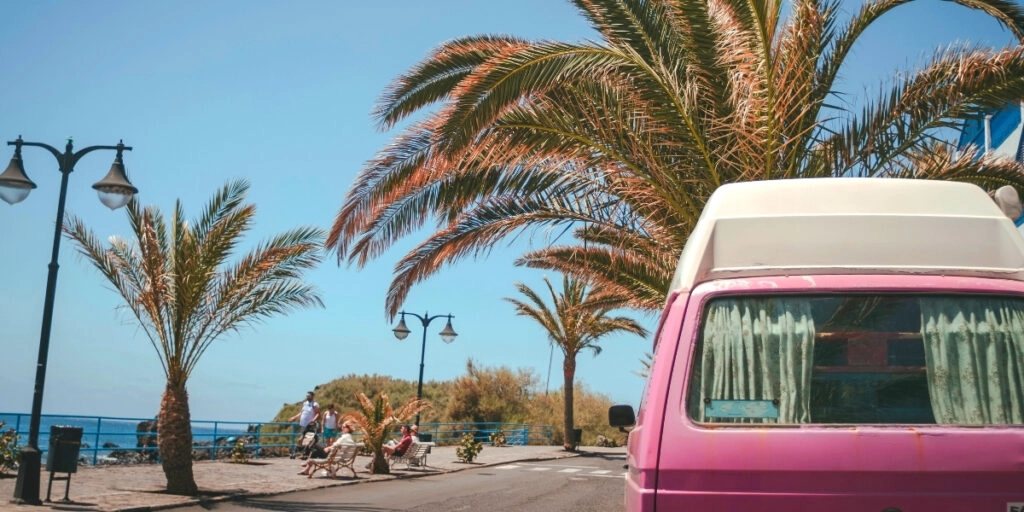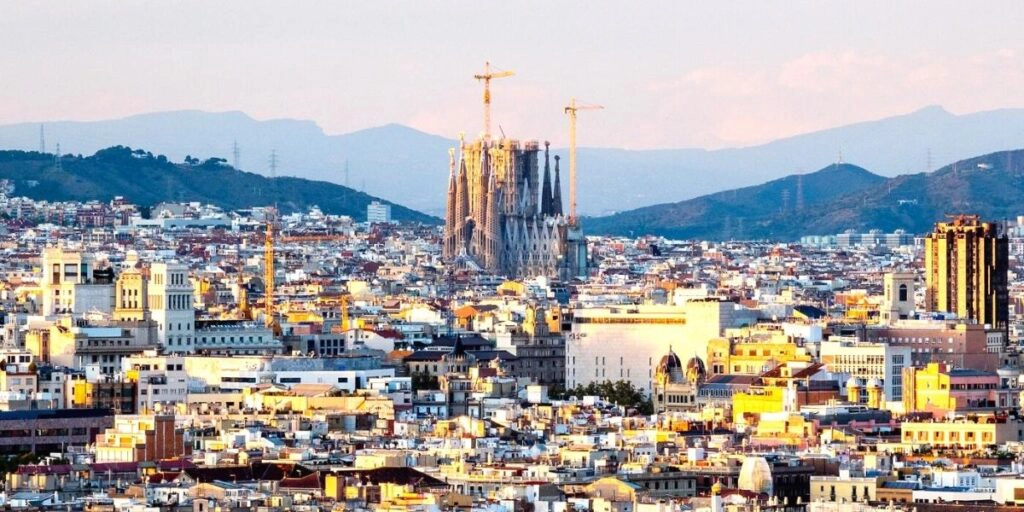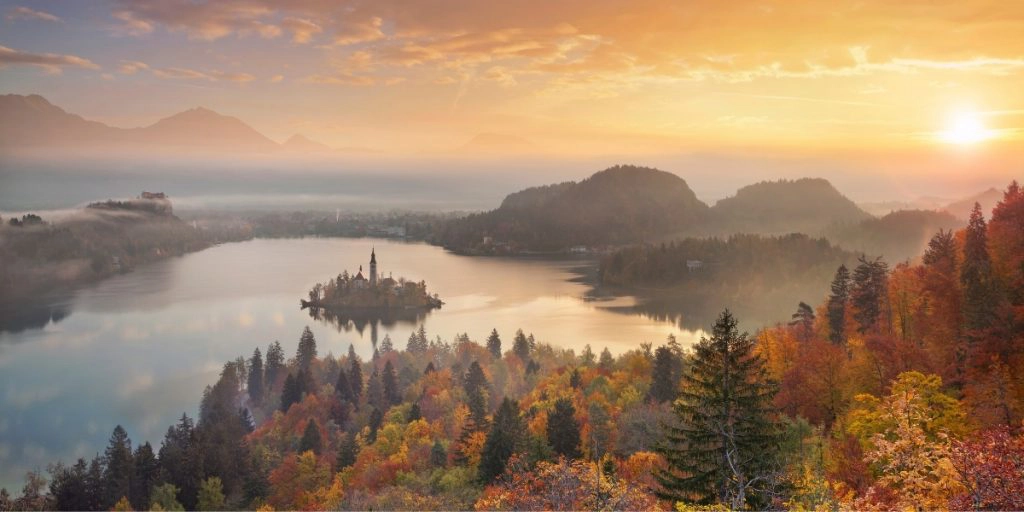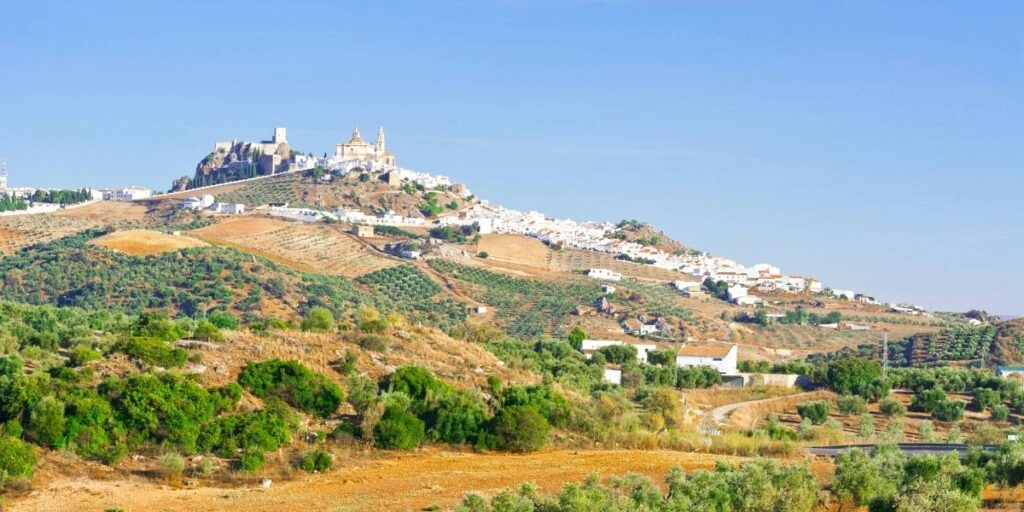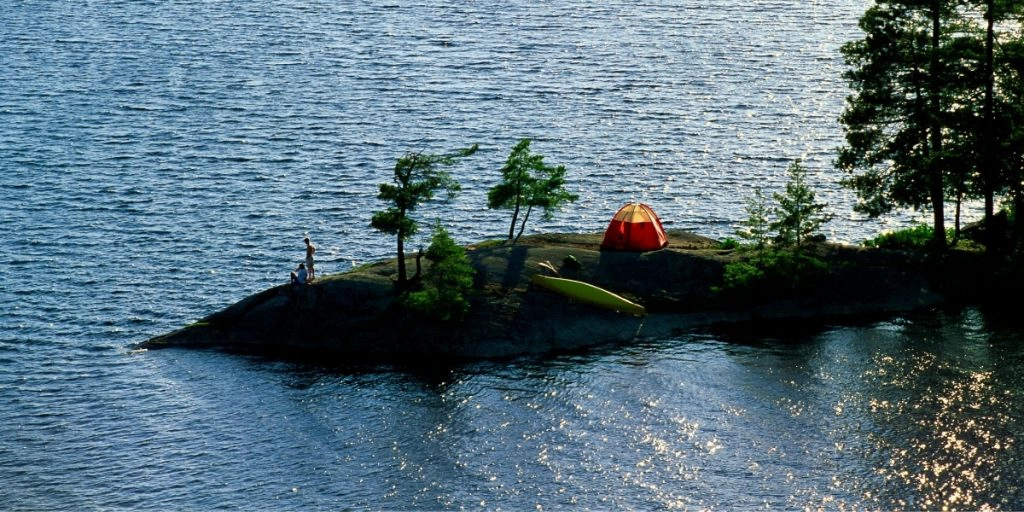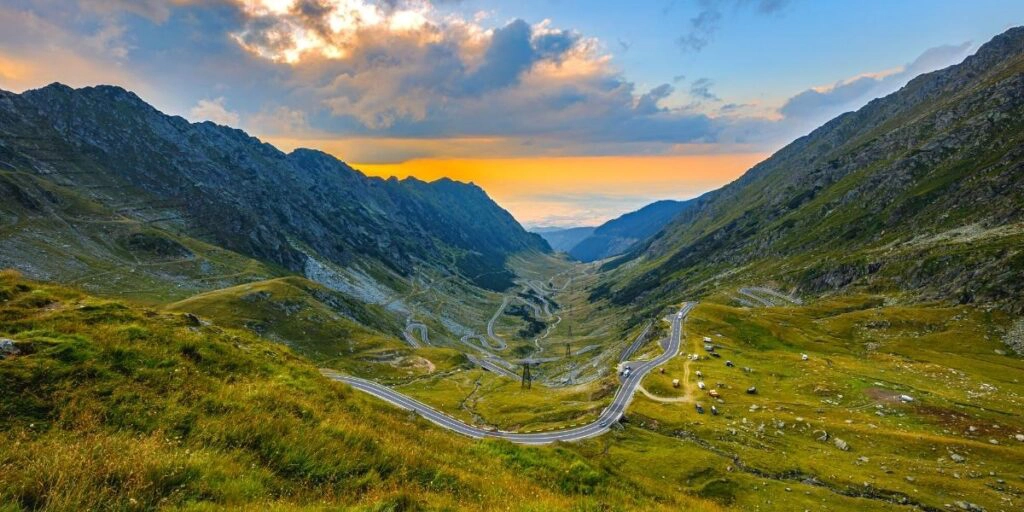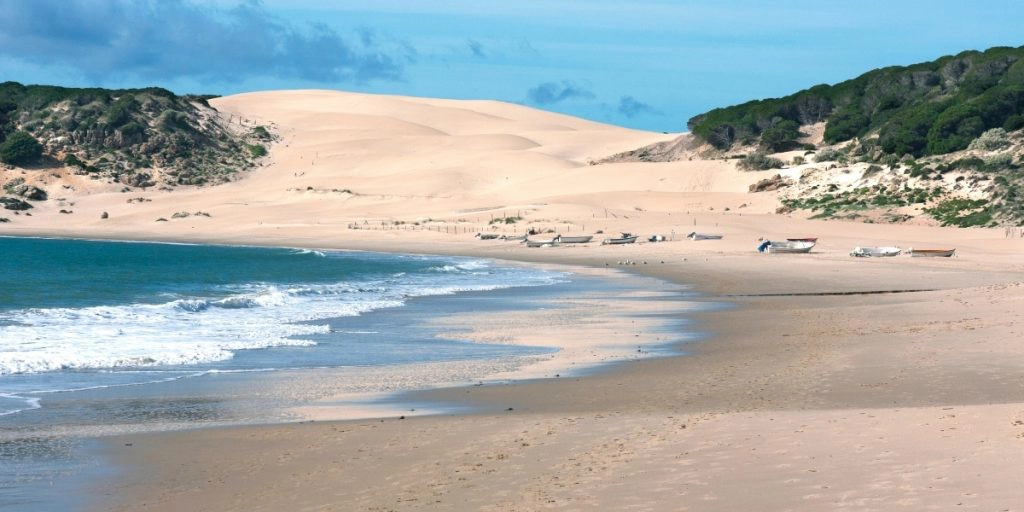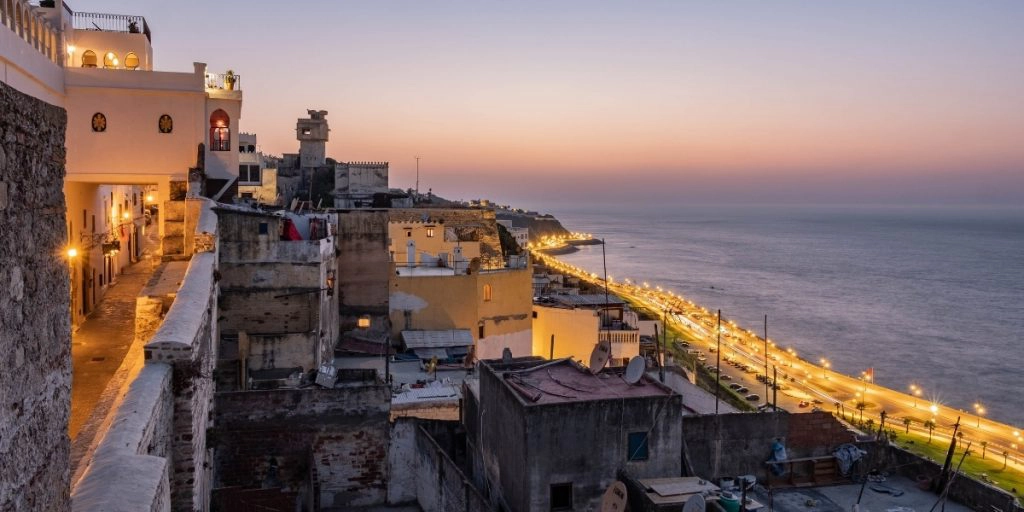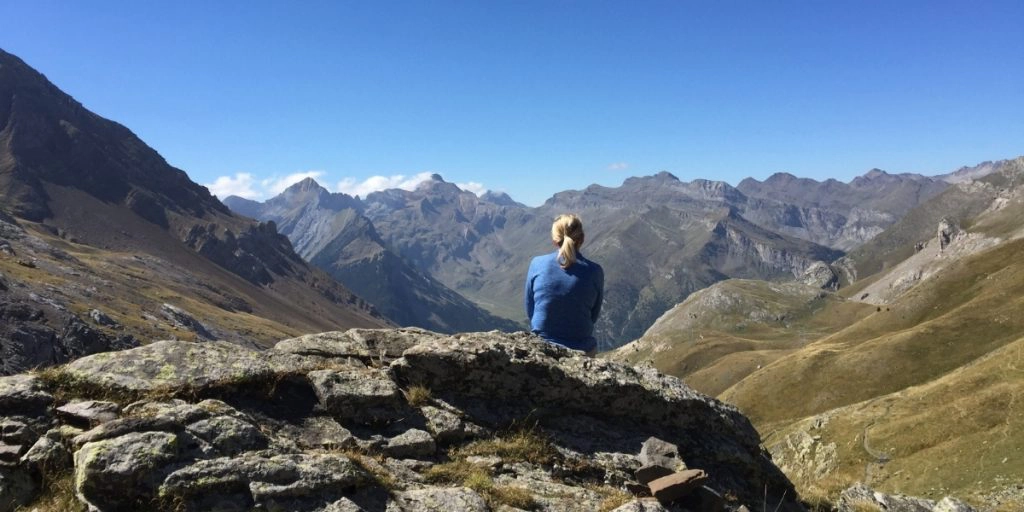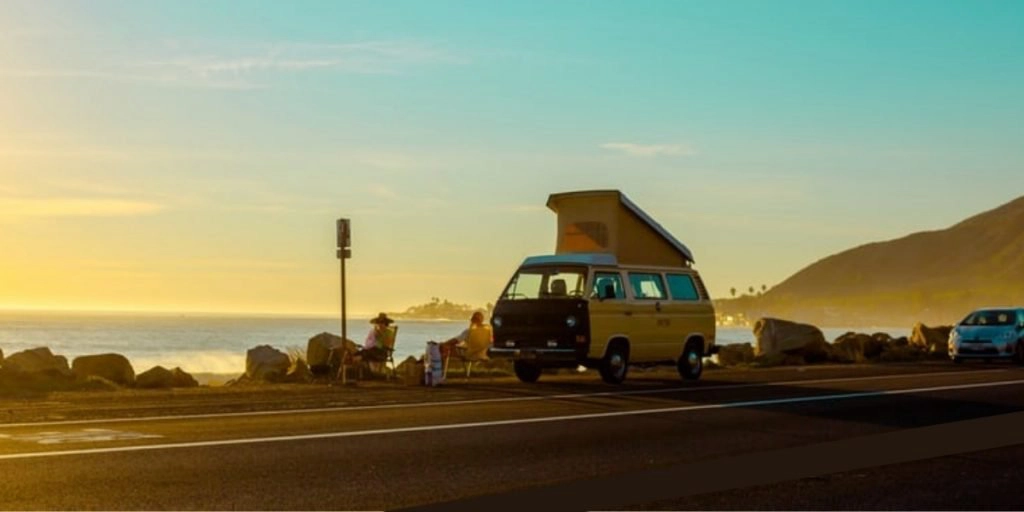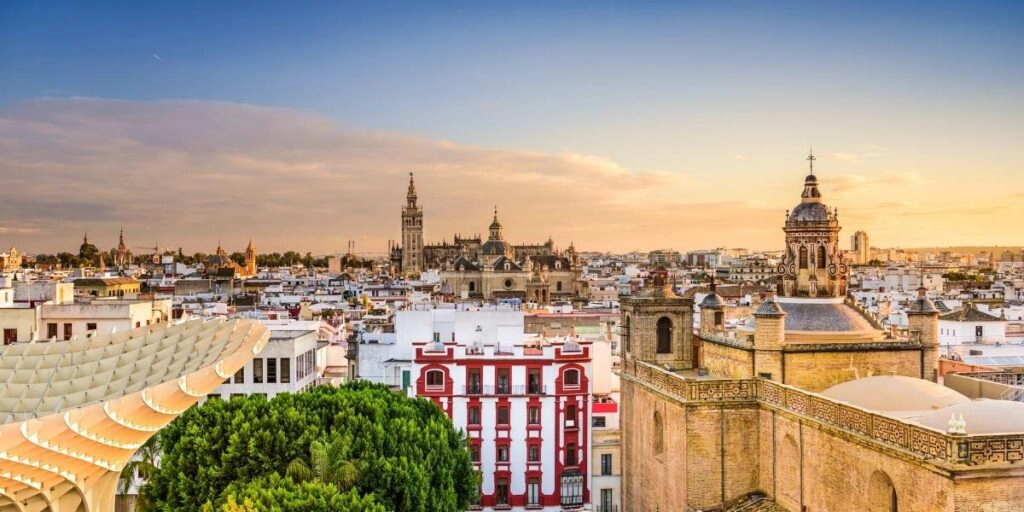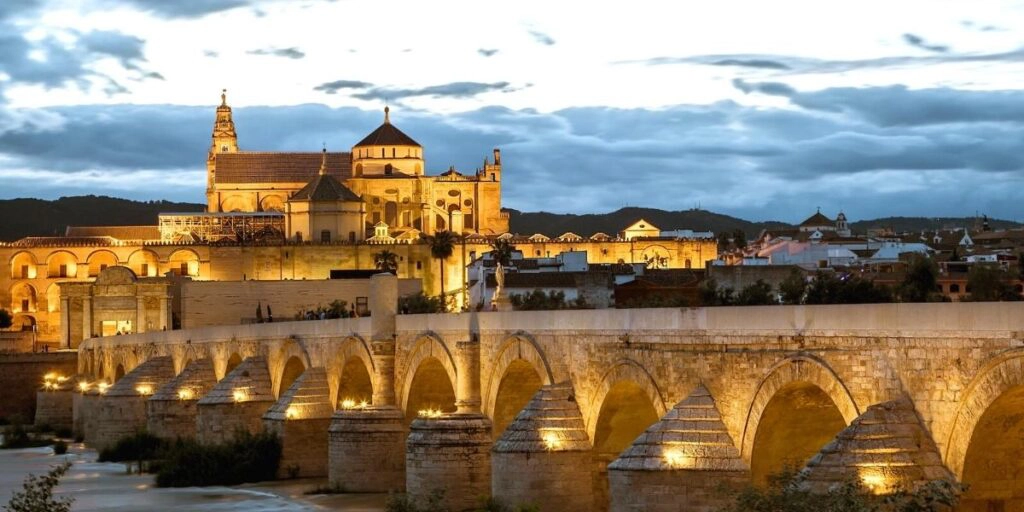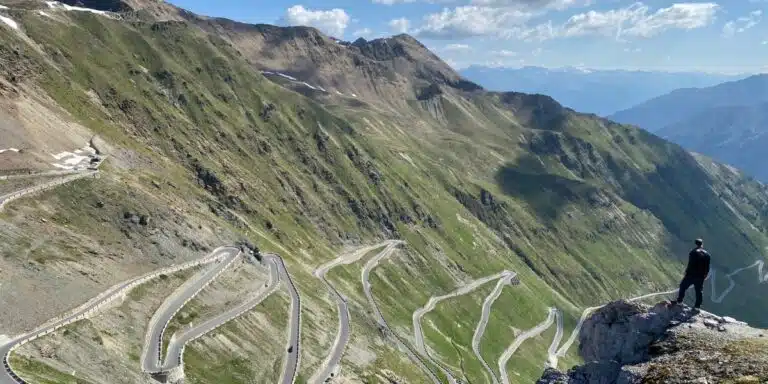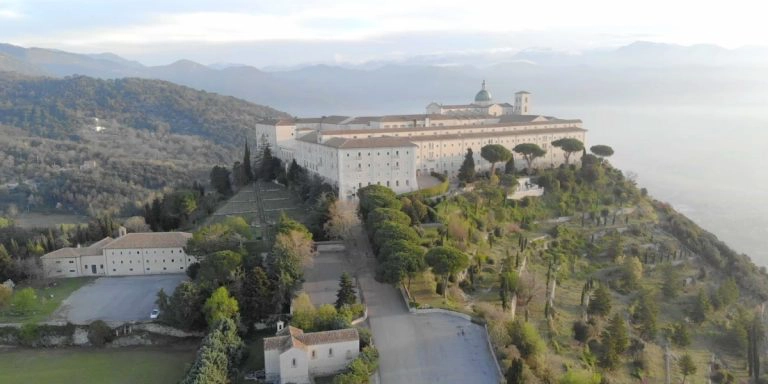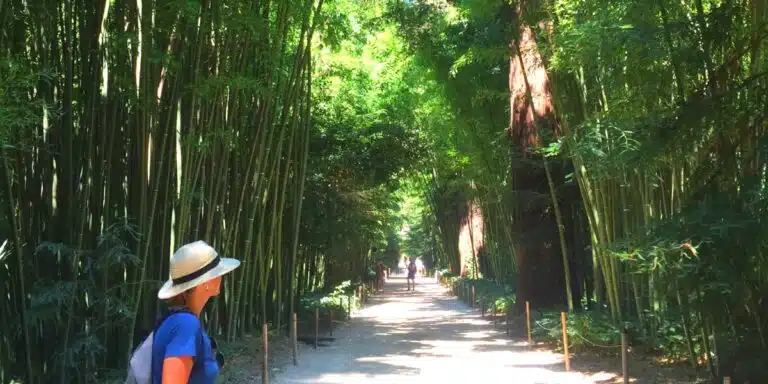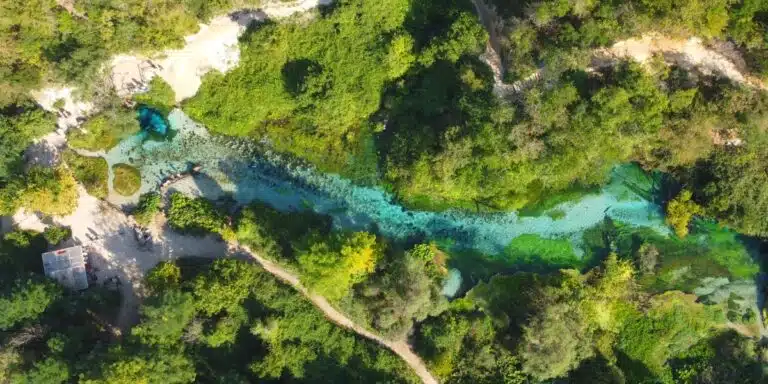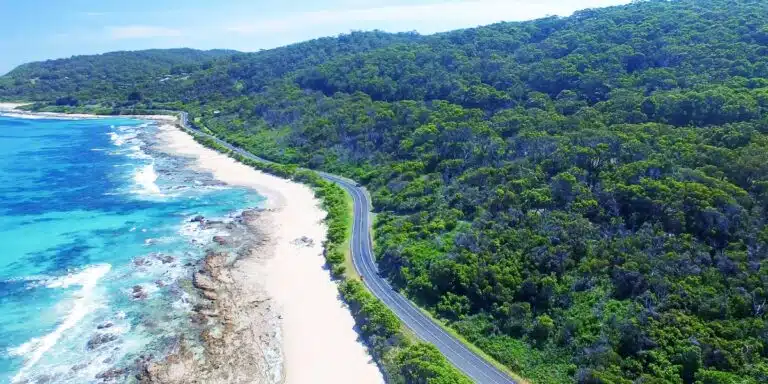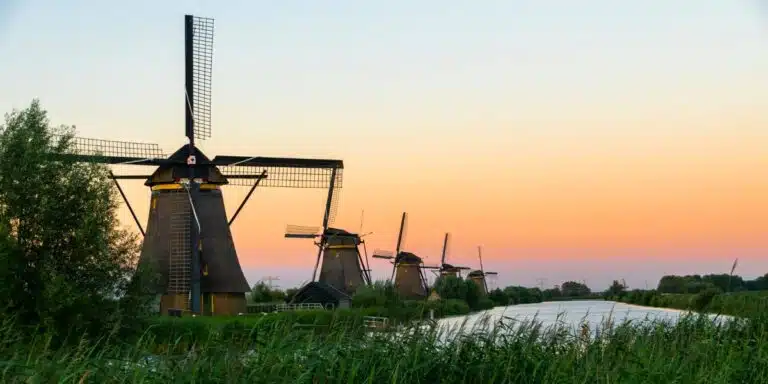This post may contain affiliate links, from which we earn an income.
Tarifa has to be one of our favorite spots in Spain. With hiking, water sports, and plenty of other activities, plus a laid-back vibe, lively nightlife, and year round mild climate, Tarifa is the perfect place for adventure and activity lovers.
We’ve been lucky enough to spend months at a time in Tarifa and in this guide, we’ll be sharing tips, recommendations, useful information, and lots of ideas for things to do in Tarifa and the surrounding area. We hope you love Tarifa as much as we do!
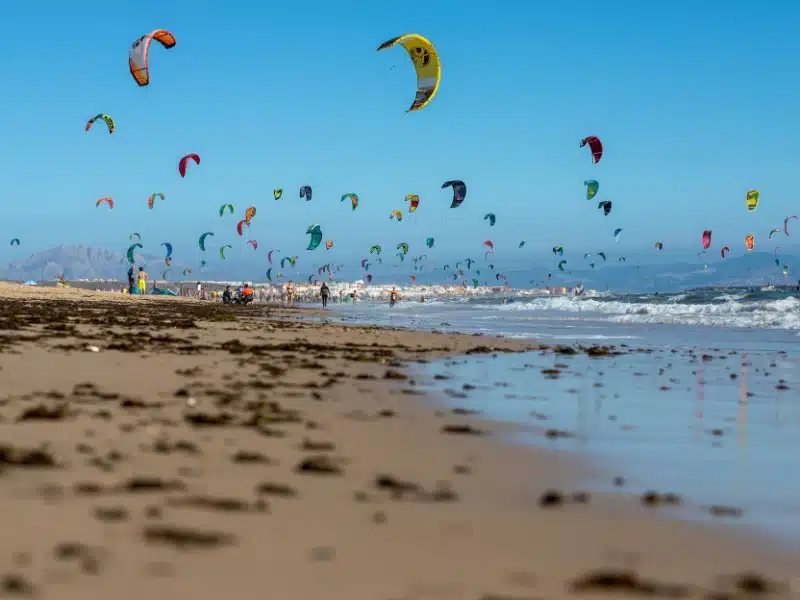
Are you planning your trip to Tarifa last minute?
Be sure to book your accommodation and tours in Tarifa ahead of time to ensure availability! Here are our top picks!
- Grab a spot of luxury at the Hotel and Spa La Residencia Puerto (our fave place to stay!)
- The legendary Hotel Hurricane has incredible sunset views and a very cool vibe
- The old town location and historic setting make Silos19 Suites a top choice
- Budget travelers will love Dori Rooms Hostal, close to Los Lances Beach
- Grab a kitesurfing taster session with a qualified instructor
- See Morocco and take a day trip to vibrant Tangier from Tarifa
- Spot whales and dolphins on this popular whale watching trip
- Meet the local marine life and go snorkeling around Isla de las Palomas
- Conquer the local hills with an exciting electric bike tour!
Where is Tarifa Spain?
Right at the southernmost tip of Spain in the Province of Cadiz in Andalucia, Tarifa is the most southerly point on the Iberian Peninsula.
Spain’s most southern town is on the pretty and unspoiled Costa de la Luz at the point where the mightly Atlantic meets the Mediterranean in a froth of currents and waves.
Tarifa is 104km from Malaga, 102km from Cadiz, and just 13km over the Strait of Gibraltar from Morocco in North Africa, a whole other continent away!
The closest airport is Gibraltar Airport which is 28km northwest of Tarifa. Other nearby airports include Malaga, which is 124km east, and Seville, which is 159km north.
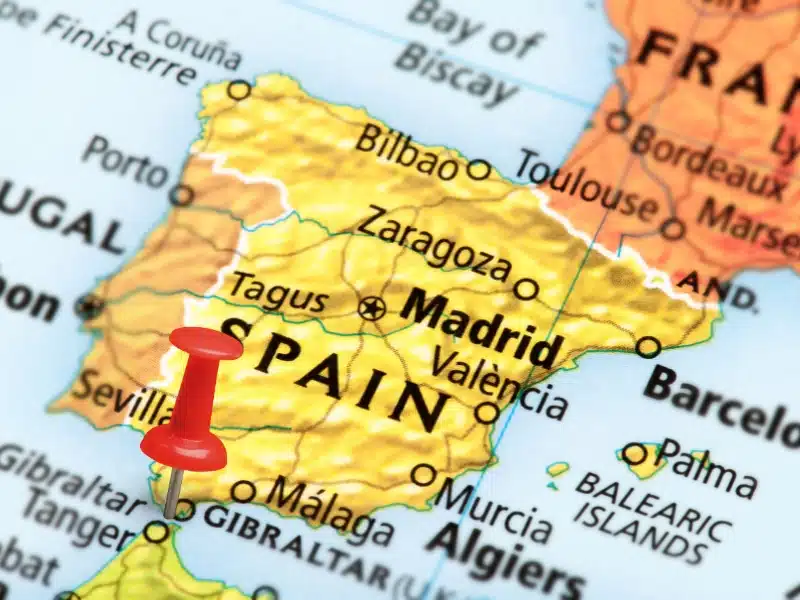
Is this your first time visiting Spain? Get all the information you need in our Spain Travel Guide, including the best things to pack, the best time of year to go, getting there, and practical tips to help you have the best trip!
When to Visit Tarifa
Tarifa’s geographical position influences its climate throughout the year and it is known for being the windiest location in the whole of Europe. Tarifa has two prevailing winds, the Levante which is the dominant summer wind, and the Poniente which usually blows in the winter.
The Levante comes from the land, making it the warmer wind but it can blow day and night for weeks. The Poniente blows from the Atlantic and is a less gusty and constant wind bringing mild weather and waves.
Spring
Spring in Tarifa is a period of mild and pleasant weather, making it an excellent time for outdoor activities and exploring the natural beauty of the area.
Average temperatures range from 13°C – 20°C | 55°F – 68°F with a moderate amount of sunshine. The number of rainy days decreases as the season progresses, with March typically having the most rainfall.
Spring is ideal for visitors looking to avoid the peak summer crowds while still enjoying comfortable weather for kitesurfing, windsurfing, and sightseeing.
Summer
Summer is the peak tourist season in Tarifa, characterized by warm, sunny weather that attracts beachgoers and water sports enthusiasts from around the globe.
Average temperatures hover between 20°C – 28°C | 68°F – 82°F, with July and August being the hottest months. Sunshine is abundant, with up to 11 hours of daylight, providing ample time for enjoying the beaches, water activities, and nightlife.
Rain is scarce during the summer months, making it the perfect time for a summer getaway as long as you book accommodation with air conditioning! It is also the busiest season, so expect prices to rise accordingly, and definitely book in advance.
Autumn
Autumn in Tarifa offers a respite from the summer heat and crowds. The temperatures start to cool down, averaging between 17°C – 24°C | 63°F – 75°F in September and gradually dropping by November.
Fall still benefits from a generous amount of sunshine, with 7 to 9 hours of daylight, but the number of rainy days begins to increase, especially in November.
Autumn is a fantastic time for those interested in experiencing Tarifa’s natural and cultural attractions in a more tranquil setting, with favorable conditions for windsurfing and kitesurfing due to the returning winds.
Winter
Winter is the least crowded season in Tarifa, offering a unique experience of the landscape’s beauty. Average temperatures during these months range from 12°C – 19°C | 54°F – 66°F, with January being the coldest month.
Despite being the rainy season, Tarifa still enjoys about 5 to 6 hours of sunshine daily, and the number of rainy days averages around 6 to 8 per month.
Winter is an ideal time for visitors looking to explore Tarifa’s historical sites, enjoy its local cuisine, and experience the town’s laid-back atmosphere without the summer crowds. The cooler temperatures and occasional rain make it perfect for hiking and exploring the natural surroundings.
RELATED POST: Wintering in Spain: Best Winter Destinations in Spain
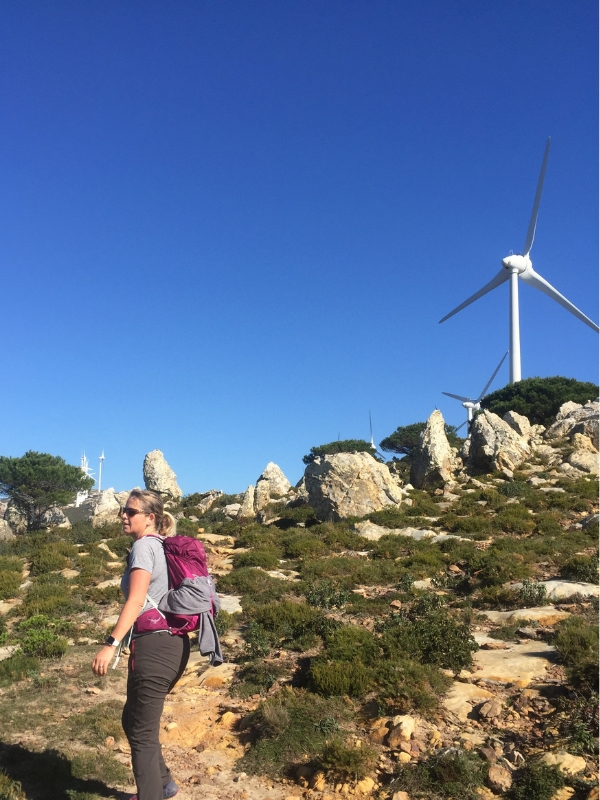
Things to Do in Tarifa
Hiking in Tarifa
We had no idea before visiting Tarifa how much good hiking there would be in the area. We had previously found Spain a challenging place to hike due to a lack of advertised or signed trails; you really have to work at finding them!
Tarifa is not any different but when you research on the internet, there is a wealth of information. We also used View Ranger to help us plan our hikes.
Everywhere we went, we would look up and around and work out how we could get up to whichever mountainous spot had caught our eye. The views here are incredible; west to the mighty Atlantic and east to the gentler Mediterranean, south to North Africa, and north to the mountains of Andalucia… hiker’s heaven!
These were some of our favorite hikes:
La Pena
The high point is right above Tarifa town and the trail winds its way through the dozens of majestic wind turbines that dot the landscape of the windiest place in Europe, with amazing views across Valdevaqueros Beach.
The start point for this 14km circular hike is at an intersection of the N-340. Coming from Tarifa, take the right turn after the pharmacy and follow the track upwards.
Once you arrive at the ornithological lookout, take the right track ahead of you as you look to the hills. The track is clear on Google Earth but starts to tail off a bit the higher you go and you will find yourself scrambling through scrub for several hundred meters before you reach the ridge.
Here you’ll find the turbine service track which you can follow left, all the way back down to the N340, or go right for La Pena and yet more glorious views.
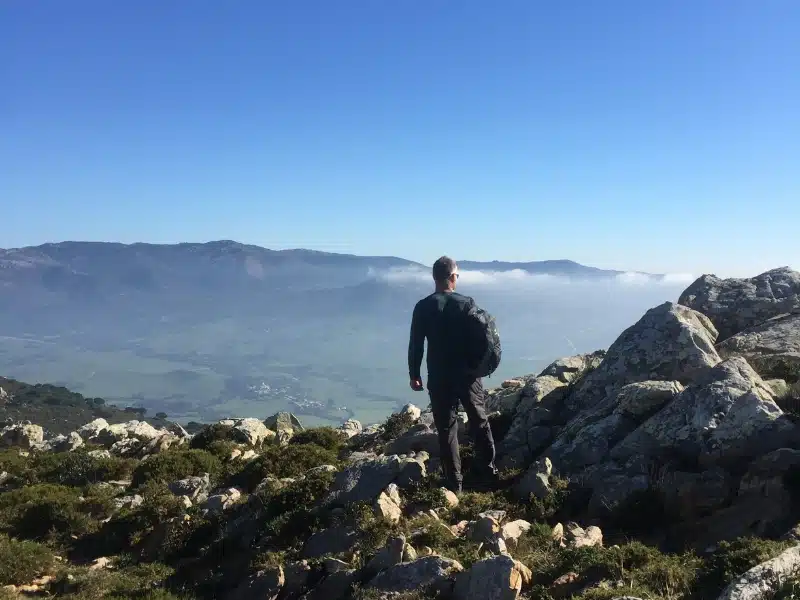
Colada de la Costa
The 11km Colada de la Costa route follows the coast west from Tarifa, through the Parque Natural del Estrecho with an amazing view across the Strait of Gibraltar to the African continent.
The start of the linear route is well marked from Maria Coronel in Tarifa (look for Sendero Europeo Arco Mediterráneo on your map) and all the way along to the Torre Vigia Guadalmesi, where it ends.
There is a cliff-top route and a route slightly higher up through the pastures, and we found moving between the two the best option, as the lower route can be difficult underfoot.
You’ll find fascinating rock formations in the water at Punta de Oliveros, and plenty of sandy beaches and rocky coves which make great lunch and swimming spots.
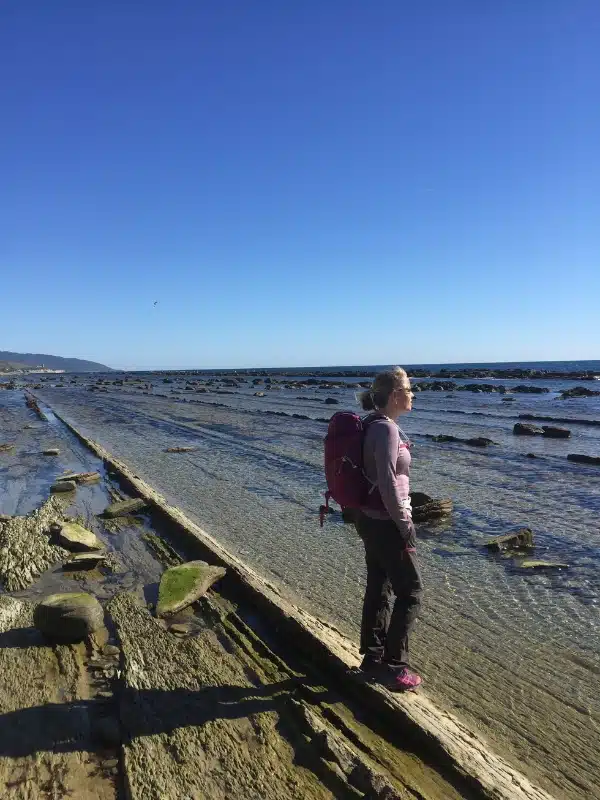
Sierra del Bujeo
This 17km circular hike gifts you with truly majestic views across the Strait of Gibraltar to Morocco and Jebel Musa, an 842m mountain peak known as the southern Pillar of Hercules, Algeciras, the Rock of Gibraltar, and on a clear day, the distant Sierra Nevada and the Province of Almeria.
The route starts at the recreation area of El Bujeo (look for signs to Area Recreative El Bujeo off the N-340 west of Tarifa), where it is easy to park. Use Google Maps in satellite view to find the correct path from the parking lot, which heads north-northeast through the cork forests of Los Alcornocales.
As you approach the ridge line, there is an easterly summit but you are turning right before the final push to the top. This right turn takes you through a gate and onto a woodland track. Within about 200m you will emerge onto the ridge which takes you to the westerly summit and then down the other side, back to the car park.
You will need to use View Ranger or another hiking app for this one, as it’s not a recognized route. Be wary of marauding goats… we stopped at the summit for lunch and they were most interested in our sarnies!
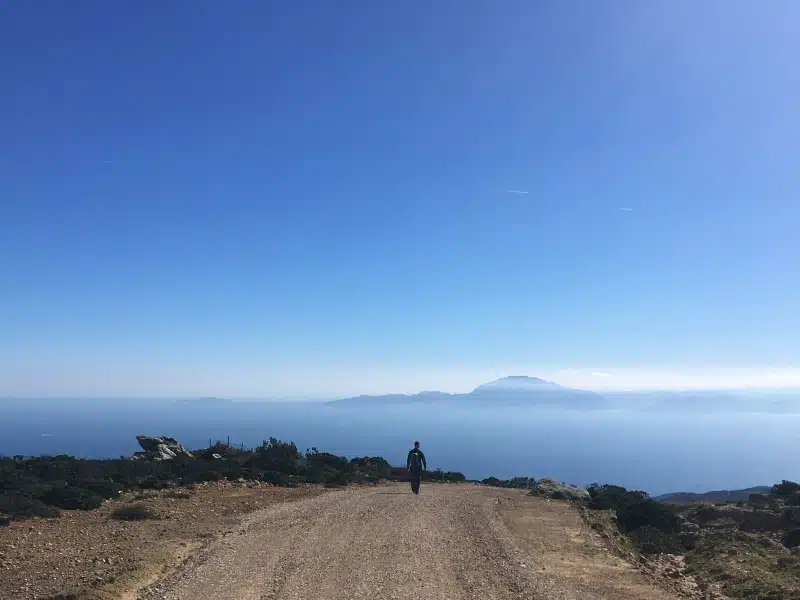
Barbate to Cape Trafalgar
50km north of Tarifa is Barbate, a fishing town on the Costa de la Luz. Just to the north is the coastal Acontilado Nature Park, where you can follow the Sendero Las Breñas to Cabo de Trafalgar, the scene of the historic naval battle that took place in 1805 between the British Royal Navy and the combined fleets of the French and Spanish Navies during the Napoleonic Wars.
This 20km linear hike starts at the Punto De Informacion Parque Natural Barbate in the port area, following a sandy path thronged with maritime pines with stunning turquoise sea views and glimpses of the lighthouse at the cape.
You’ll pass through the small town of Los Canos de Meca before arriving at the cape, this is a little tedious; you can walk on the beach instead…it makes for a much harder hike though! The cape itself is glorious but can be very windy. The distance quoted is for a return hike but taxis are available in Los Canos de Meca if you’d rather do one way.
Be mindful of processionary caterpillars here from December to April, they can be poisonous to humans and fatal for dogs.
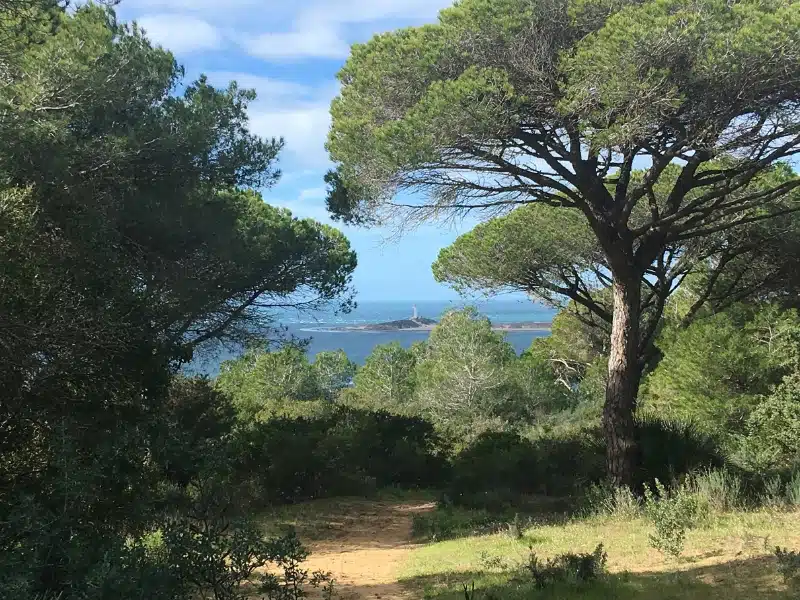
Piscinas Naturales de Bolonia
This hike is a bit of a ramble along the beaches and coastline from the Duna de Valdevaqueros, across Punta Paloma, and along the coast as far as you want to go. It is possible to hike as far as Bolonia, but the tide and rocky beaches can make this challenging.
We took a slightly higher path through the Pinar del Chaparral forest which backs the coast but self-navigated as there is no signage or recognized route.
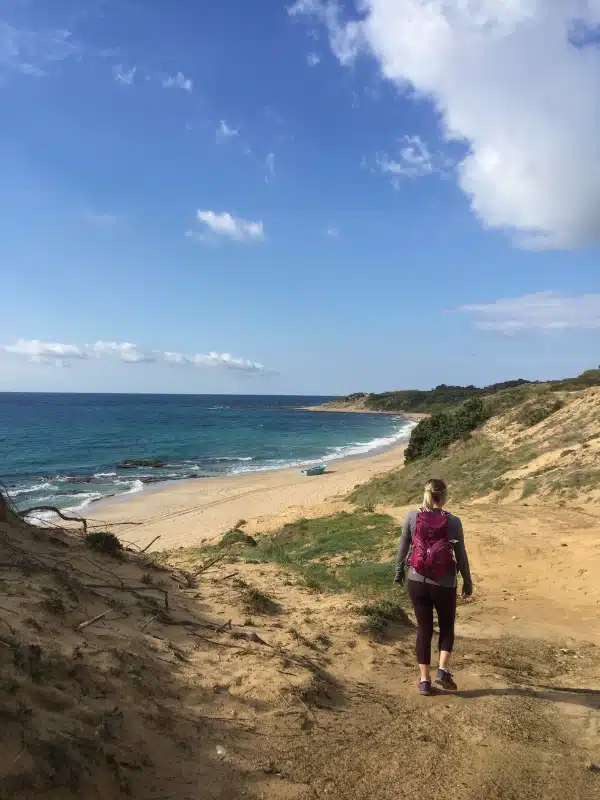
Water Sports in Tarifa
Kite Surfing
During our visits to Tarifa Phil learned to kite surf, something he had always wanted to do. Tarifa is probably not the best place to learn in the winter, due to the gusty winds but with a little determination and a willingness to spend a lot of time in the water, the dream was achieved!
Phil took lessons, and staying for a month each time was ideal as we had time to hike, cycle, and chill whilst waiting for the wind to be right for a day on (and in!) the water.
Lessons cost around €130 for two hours of one-to-one tuition, this usually includes equipment. The lessons were in English and the instructor was knowledgeable and patient. Be prepared to be hooked, this is an adrenalin-inducing and addictive sport!
Many kite schools open year-round but say that the months of May, June, September, and October are the optimum months to learn due to the calmer weather and steady wind.
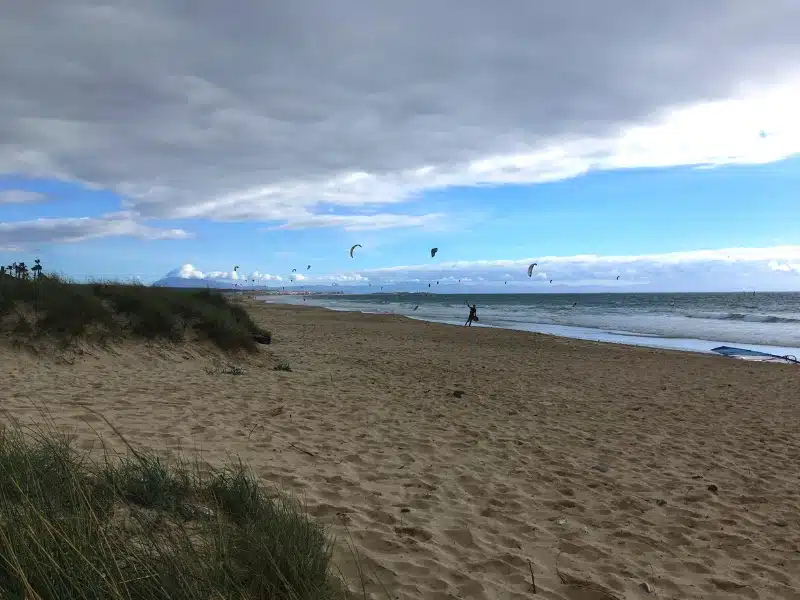
Windsurfing
Windsurfing is another popular sport in Tarifa – where you see kite surfers you’ll also see windsurfers.
It’s possible to rent equipment and wetsuits in the town and take lessons from many of Tarifa’s beaches.
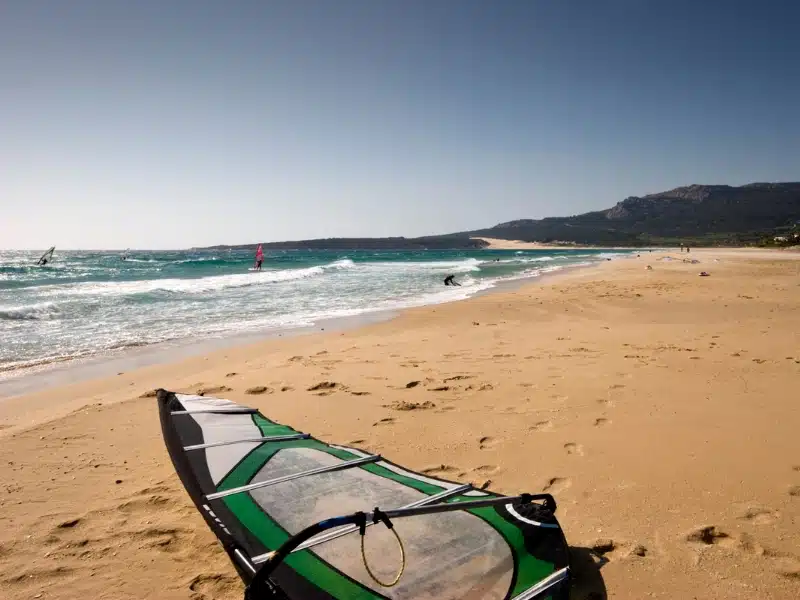
Surfing
If you’re looking for a good swell, the best months to surf in Tarifa are from September to May. You can surf in summer but the waves tend to be smaller and less consistent.
One of the best places to surf is the Balneario surf spot, sandwiched between Playa de Los Lances and Playa Chica, right in front of the Balneario Beach Club. It’s a good spot for beginners or intermediates and during the summer season, it is the only allowed area for surfing in Tarifa!
You could also try the Hurrican surf spot but there are rocks here so do your research before heading there. To the right of this spot, by the El Chozo chiringuito, there are smaller waves that are good for stand-up paddle and longboarding.
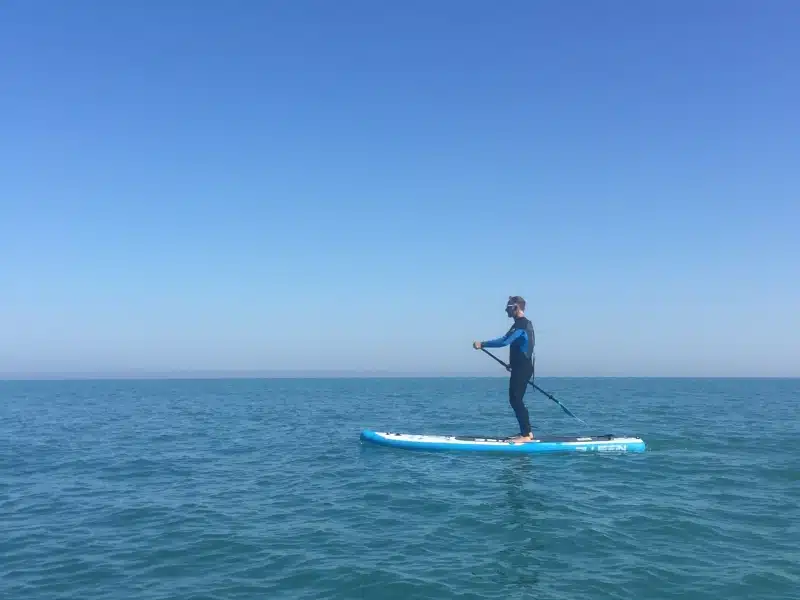
Visit Baelo Claudia
North of Tarifa just outside Bolonia is Baelo Claudia, one of Andalucia’s most important archaeological sites. The ancient Roman town of Hispania has weathered the elements extraordinarily well and is more accessible than any other archaeological site we have visited.
The Roman ruins are fascinating and the surrounding area is beautiful. It’s not surprising that the Romans chose to build and live there for five centuries. Like much antiquity in Andalucia, the ruins are free to enter and well worth the effort to get there!
From Tarifa, it’s 23km to Bolonia so you’ll either need to drive or arrange a taxi. In the summer months of July and August, there is a microbus from Tarifa to Bolonia which leaves Tarifa town bus station to Bolonia three times a day, taking 25 minutes to get there.
There is also a great cycle ride to Bolonia and Baelo Claudia. Head north from Tarifa on the N-340 and take the road signposted to Betis. There follows a steady climb of around 250 meters over one mile to the village before descending all the way to Bolonia, with gorgeous mountain and sea views all the way.
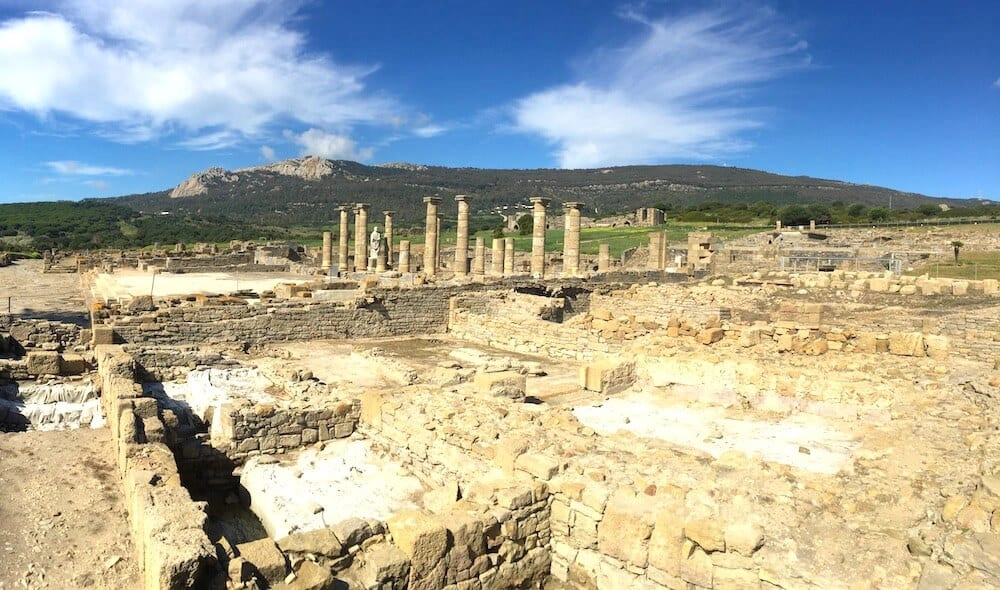
Take a Day Trip to Tangier in Morocco
Just a few miles across the sea lies Morocco and the vibrant port city of Tangier which is well worth visiting. Take the fast catamaran from the port of Tarifa port and be there in an hour; spend a day or maybe two exploring this noisy and colorful city, but be prepared for a culture shock!
If you prefer to have things organized for you, book this well-rated day trip to Tangier from Tarifa which includes ferry tickets and a guided tour of the city.
RELATED POST: Tarifa to Tangier: Tips & Tricks for a Day Trip to Morocco
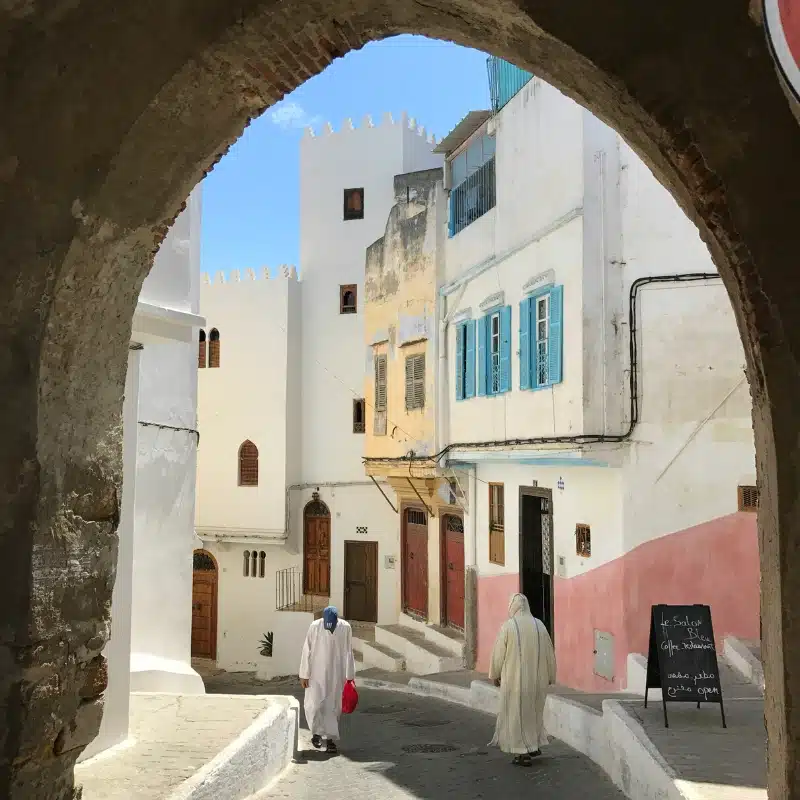
Go For a Bike Ride!
Biking ranks as a top activity in Tarifa, second only to water sports. The focus here is on the diverse terrain; whether you’re up for a challenging climb or want the thrill of downhill mountain biking, Tarifa has it all. And if a leisurely ride along the coastal roads is more your speed, you’re in luck there too.
There’s a wide variety of cycling paths to suit every level of skill and fitness. Opt for a guided group excursion or rent bikes and venture out with a map on your own – that’s our favorite way to experience it! Expect to get a bit lost, encounter breathtaking views, and discover new trails and hidden gems to explore.
If you prefer someone to take care of the details, this brilliant electric bike tour is for you. With an experienced local guide and all the equipment you need provided, you’ll be up in the mountains in no time!
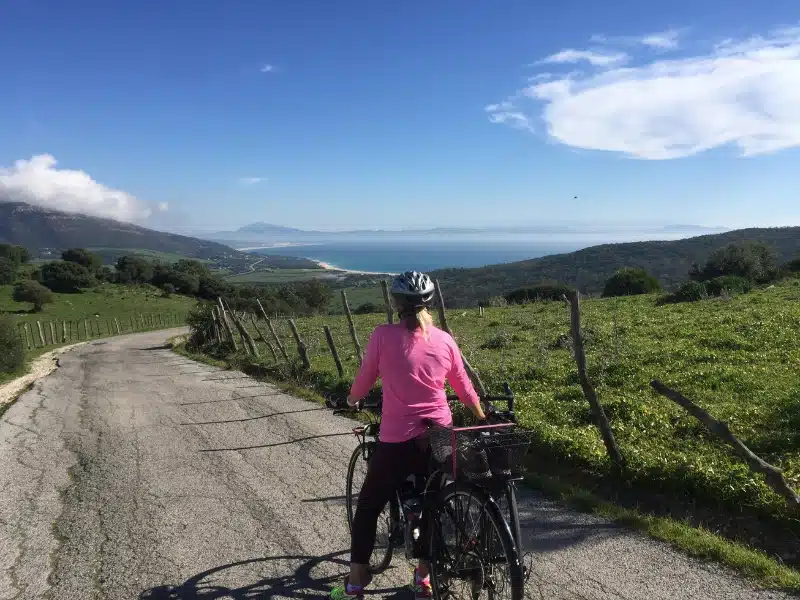
Hit the Beaches in Tarifa
Tarifa has incredible beaches, long with fine white sand and mostly Atlantic facing. Spend a day in the sun watching the kite surfers perform amazing tricks, chill closer to town, and indulge in a bit of people watching or just kick back and relax. These beaches are one of the reasons we loved Tarifa so much!
Playa de Los Lances
Playa de Los Lances is six miles of white sandy paradise backed by the promenade Paseo Maritimo. Located on the Atlantic side of town, the beach stretches as far north as far as a small headland on which sits Torre de la Peña. The beach and the pines behind it are officially protected as a Natural Area.
The beach is well-equipped with public toilets, showers with changing rooms, lifeguards (in high season), first aid points, flags to signal the state of the sea, several restaurants, and beach bars.
Some of these facilities will be closed in winter. There is plenty of parking and space for kite surfers to park and set-up their equipment year-round.
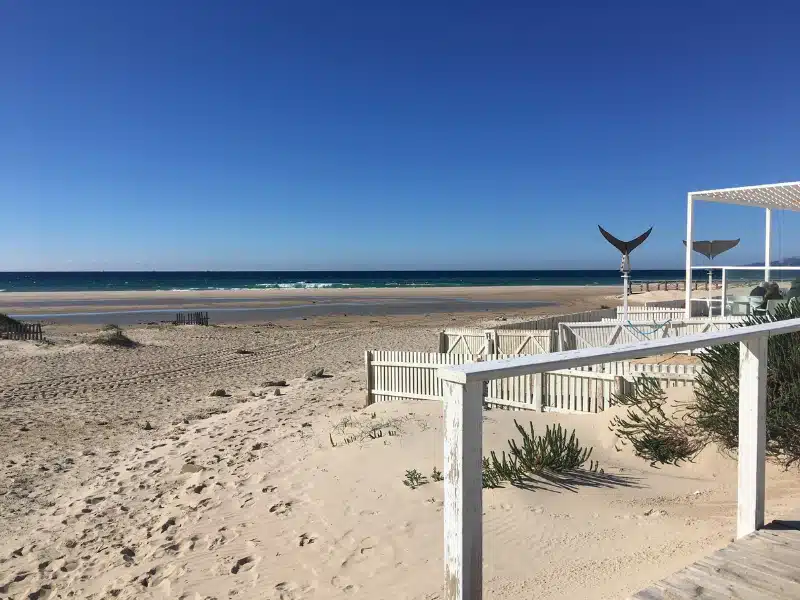
Playa de Valdevaqueros
This is the beach that defines windy Tarifa. Playa Valdevaqueros stretches three miles from a small headland, on which sits Torre de la Peña, near the famous Hurricane Hotel, all the way to the stunning Playa Punta Paloma.
Packed with kite surfers when the wind direction is right, this is a great beach on which to while away a couple of hours. You’ll also see windsurfers and horse riding here, and on the odd occasion when the wind is right, paragliders descend to land on the beach.
Heading north from Tarifa, the beach is signposted to the left and accessed via a dusty track. There is a small network of car parks, which cost 5€ for the day, but which are unmanned and free in winter.
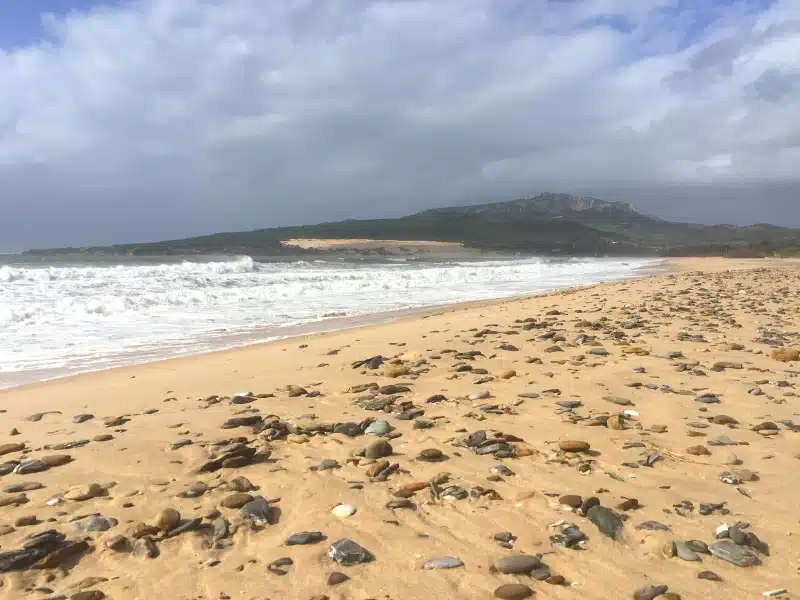
Punta Paloma Beach
Punta Paloma is the picturesque cape a short drive north of Tarifa, marking the division between Tarifa’s vast beaches and those of Bolonia. The beach at Punta Paloma itself is a pristine, untouched haven with towering sand dunes ascending over 100m from the shoreline.
These dunes have formed as the wind sweeps sand from the beach over the cape, engulfing vegetation and trees in its path.
From the summit, there are breathtaking views stretching down to Tarifa, across the strait towards Morocco. Gazing down, the sight of exposed tree branches amidst the shifting sands reveals the hidden forest beneath your feet.
In an attempt to halt the sand’s relentless march in the 1990s, local authorities erected wicker barriers, a measure that proved futile. Environmental advocates have since argued for the removal of these now-buried fences, which leave behind hazardous spikes protruding from the sand.
Positioned just behind these monumental dunes is the A-2325 road, offering a less strenuous route to the top. However, this road frequently finds itself under siege from encroaching sands, necessitating cautious navigation.
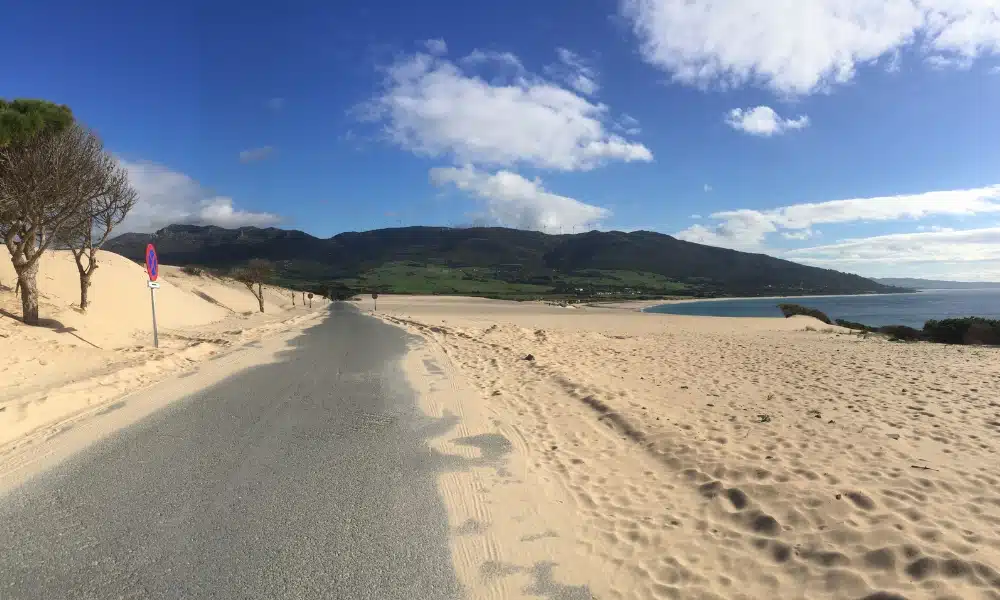
Playa Chica
Playa Chica is a small family beach, very popular with Tarifenos, the local residents. It is one of the only beaches in Tarifa that is sheltered from the strong winds. Playa Chica can get very crowded on particularly breezy days!
Located in a small cove to the east of causeway Calle Segismundo Moret, between the port and Isla de las Palomas, this beach is definitely worth a visit.
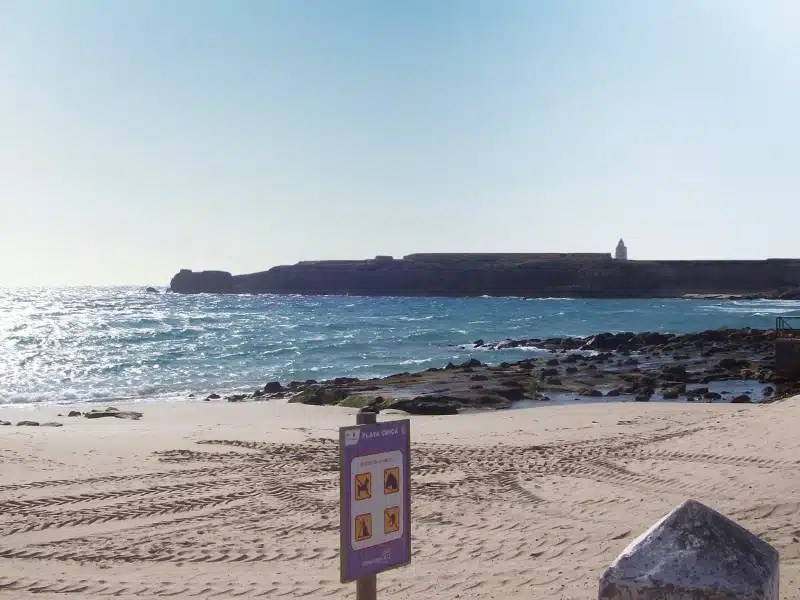
Playa de Bolonia
A few miles from Tarifa, Bolonia Beach is right next to Baelo Claudia, the Roman settlement. This is a really special stretch, unspoiled, slightly wild, full of nature, and beautiful soft sand lapped by crystal clear turquoise water. Backed by large untamed sand dunes, this remote beach is one of the best in Spain.
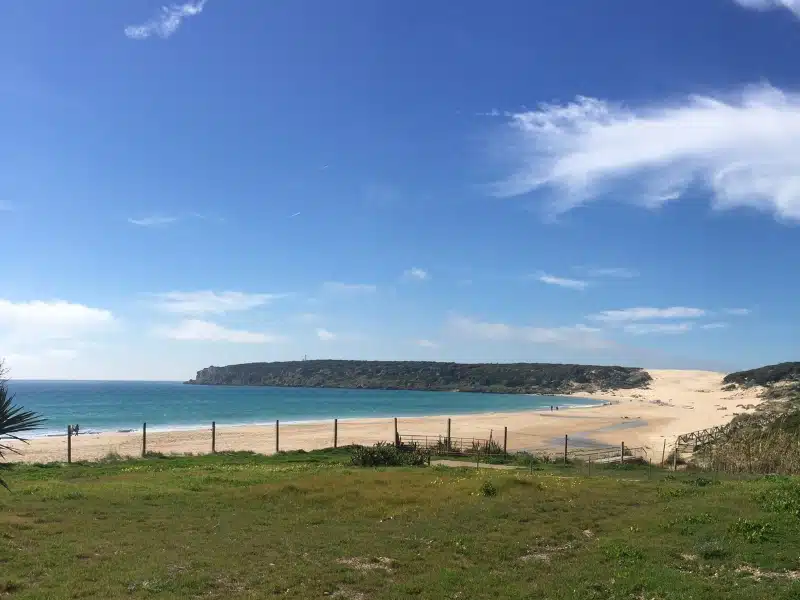
Whale Watching in Tarifa
The waters around Tarifa are a UNESCO International Biosphere Reserve and a great place for whale watching due to the unique marine corridor where the Atlantic Ocean and the Mediterranean Sea converge. The narrowness of this passage, just 8 miles wide at its slimmest point, results in a high density of cetaceans, particularly mid-channel.
About three miles from shore, you’re likely to encounter species like the Pilot, Minke, and Sperm whales, as well as Orcas and Fin whales, and bottlenose dolphins. Seeing these magnificent creatures in their natural habitat is pretty incredible, and a real privilege.
The best time for whale watching boat trips from Tarifa is between May and September. This excellent whale watching experience provides a team of multi-lingual marine professionals and biologists to share information about the whales and dolphins you’ll see in their natural environment.
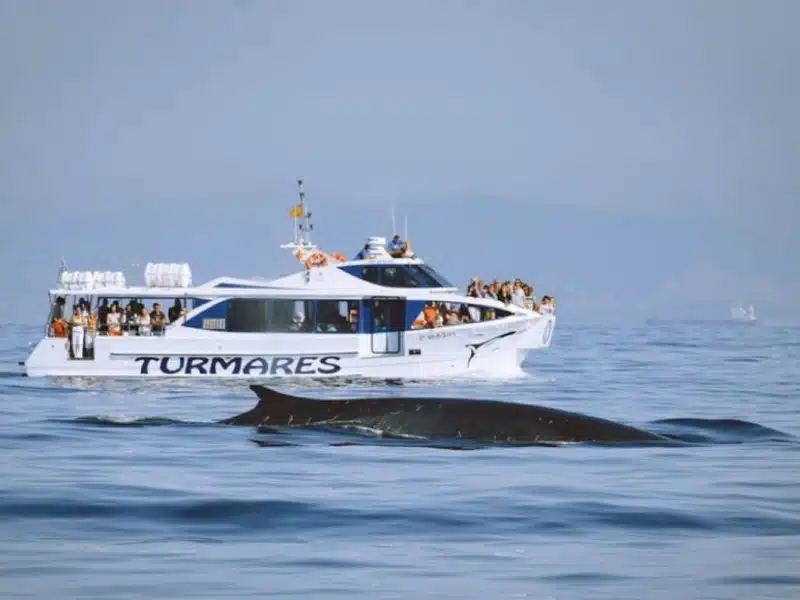
Catch the Sunset
The sun setting over the Atlantic is always a special time of the day in Tarifa, with crowds gathering at the best spots to enjoy the view.
Good sunset spots include Tumbao on Playa Valdevaqueros, the Mirador del Estrecho viewpoint just outside town on the N-340 heading east, the Hurrican Hotel, and Waves Beach Bar on Playa de Los Lances.
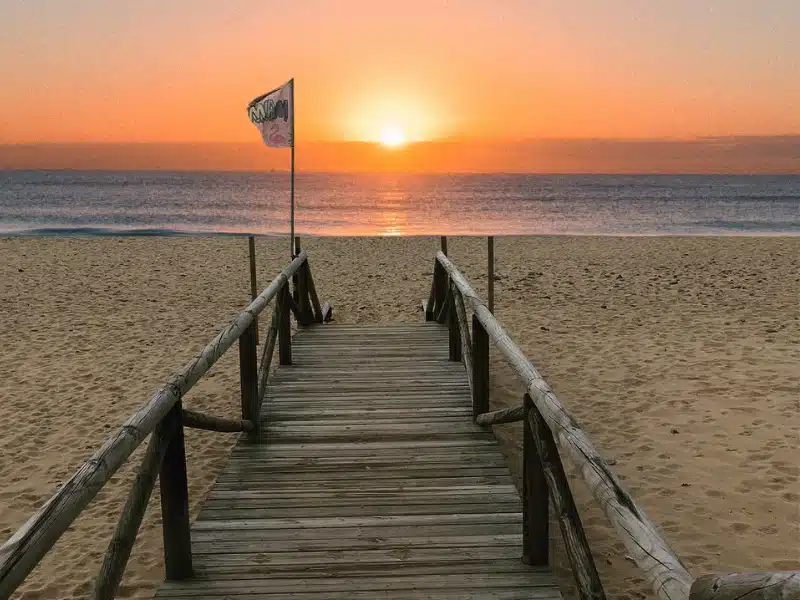
Other Spanish Travel Ideas
Visit Spain’s Most Southerly Point
Walk out to Isla de las Palomas and stand at the most southerly point in continental Europe, with the Atlantic to your right and the Mediterranean to your left… it’s definitely one of those moments!
The bridge that connects the island with Tarifa was built in 1808 and from the moment of its construction, the isthmus marks the dividing line between two mighty seas.
Sadly the island itself is gated and out of bounds. You can see the buildings of what was a military base through the iron railings of the gate, but you can’t actually get to the Southernmost Point of Iberia, Punta de Tarifa, which is occupied by a 19th century lighthouse.
But, since 2022 it’s been possible to take a guided tour of the Tarifa Island Interpretation Center by contacting the Tarifa Tourist Office. The tour covers the history of the Straits of Gibraltar and Isla de las Palomas, its defensive background, and the lighthouse, known as the ‘watchdog of the Strait’.
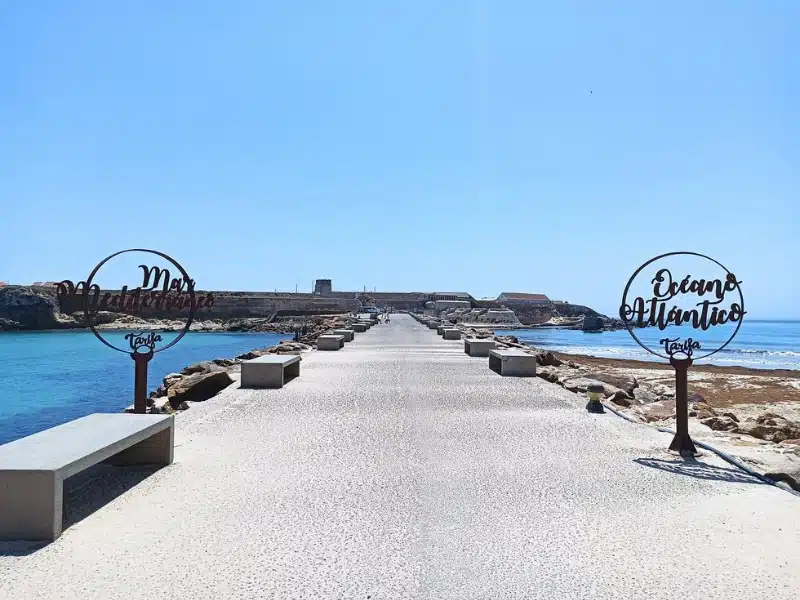
Climbing in Tarifa
The best spot for climbing is north of Tarifa, where the San Bartolo climbing area at Betis offers two main climbing areas with many different sectors and about 280 routes in total. The length of the routes varies from 8m to 90m in hard sandstone. Most of the routes are well-bolted and have been recently re-equipped with glue-in bolts and anchors. Contact Tarifa Adventure for more information.
San Bartolo holds the title as the southernmost climbing spot in Europe. While it may not boast the largest climbing area, its appeal lies in the straightforwardness of its routes, the accessibility and overall convenience of the location, the high quality of the rock, and the consistently favorable weather conditions throughout most of the year.
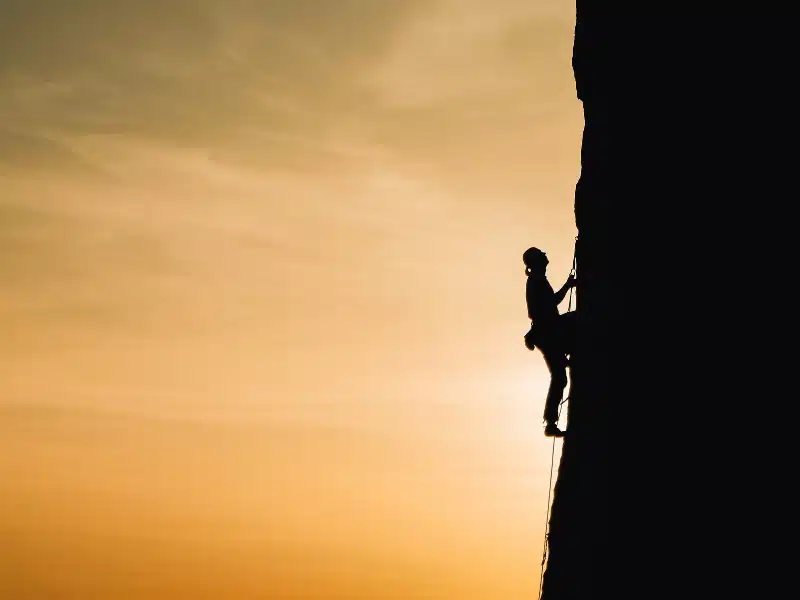
Snorkeling & Diving in Tarifa
Where the Mediterranean Sea merges with the Atlantic Ocean the waters are crystal clear and teeming with fish, offering some of the best reef diving in Southern Spain.
Take a dive trip with Centro de Buceo Ocean Addicts or Simply Diving Spain and explore the waters around Isla de las Palomas where ecosystems mingle and give rise to a unique abundance of marine life, and aquatic fauna and flora. Turtles, sunfish, and eagle rays have all been spotted here.
If you’re not into scuba diving, this small group guided snorkel tour is a lot of fun. All the equipment plus a wetsuit is provided and the qualified instructor will take you to all the best spots.
Explore Tarifa’s Old Town
Tarifa’s historic center is at the heart of the town and meandering through its cobbled alleys, you’ll find remnants of both Roman and Moorish architecture, and pretty squares and streets lined with shops, bars, cafés and restaurants.
The main entrance is through the weathered medieval stone of Puerta de Jerez, the only remaining gate in Tarifa’s 13th century city walls. The arched gate is protected by two crenelated towers above which is a plaque explaining a key date in the history of Tarifa: when King Sancho IV, whose statue you can see by the castle, conquered the city from the Moors.
A highlight within the old town is the Castle of Tarifa or Castillo de Guzmán el Bueno. This 10th century Moorish fortress was built by Abd-ar-Rahman III, Caliph of Cordoba, to protect Tarifa against raids from Africa and Vikings from the North.
The old church of Iglesia de San Mateo was built on the site of an old mosque in the 16th century and is well worth a visit. The Baroque exterior and inside, the ornate golden altarpiece is quite something. Make sure to cover your shoulders and knees for your visit to the Church of San Mateo.
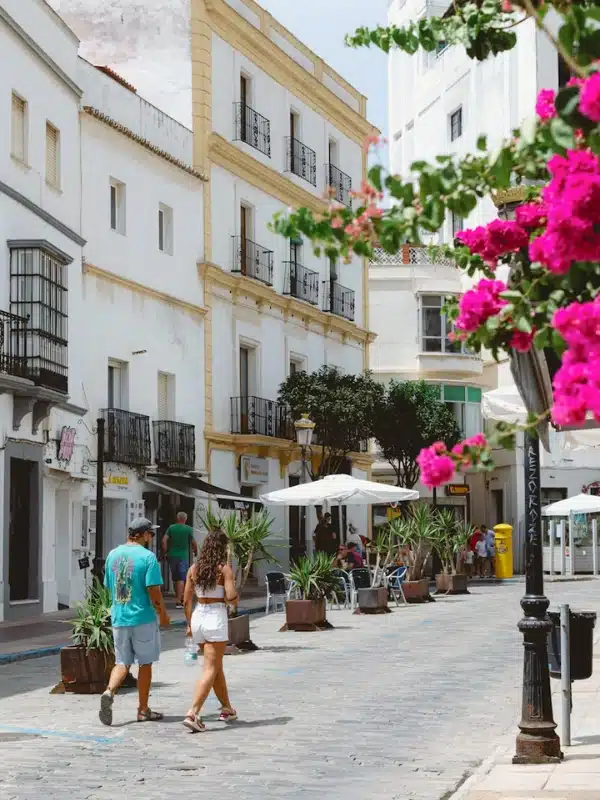
Other Spanish Travel Ideas
Discover the Costa de la Luz
The undiscovered Costa de la Luz extends north from Tarifa past the sea city of Cadiz and the sherry capital of Jerez de la Frontera to the port city of Huelva, close to the Portuguese border. It’s easy to take culture trips from Tarifa to places along the coast in a day.
Off the beaten path along the way north are beautiful beaches dotted with chiringuitos serving locally caught fish, pretty white villages like Vejer de la Frontera, historic El Rocio, the pilgrimage village without cars, and Entorno Doñana, Spain’s largest nature reserve, which is also a World Heritage site and Biosphere Reserve.
Cadiz
The oldest city in Europe, Cadiz is known for its splendor, caused by the effect the sea air has on its architecture, leading to the facades of buildings crumbling and bleaching.
Almost completely surrounded by the waters of the Atlantic Ocean, Cadiz is a fabulous city for simply wandering and soaking up the ambiance. Tall buildings with painted facades, labyrinthine back streets, pretty flower-filled squares, and a few fabulous churches await you.
Take a guided tour of medieval Cadiz, and see all the city’s landmarks, including the Neoclassical and Baroque cathedral and its museum, the Roman theater in the area known as the Pópulo, and structures dating back as far as the Phoenician era.
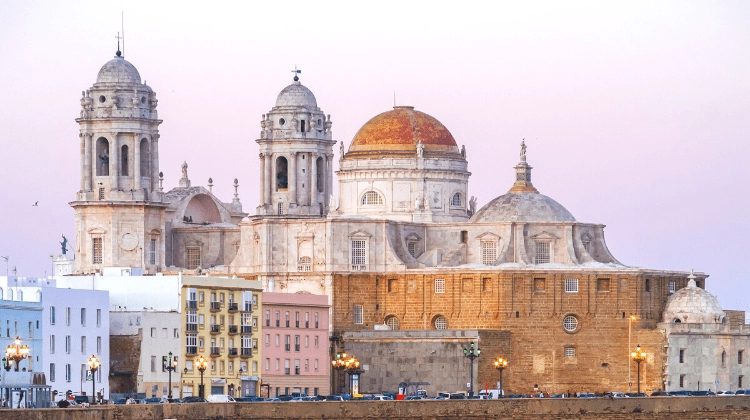
Jerez de la Frontera
Just inland is the historic town of Jerez de la Frontera, our favorite Spanish city. Hot and heady Jerez has been the home of sherry since the 14th century.
The particular local soil, climate, and grape variety combine to create this complex and often delicious fortified wine which can only be produced in the so-called ‘sherry triangle’, which holds the Denominacion de Origin of Jerez y Sanlúcar de Barrameda.
The nearby towns of Sanlúcar de Barrameda and El Puerto de Santa María are the other points of the triangle, which is bordered by the Atlantic Ocean, the majestic Guadalquivir River, and the beautiful Cádiz Sierra mountains.
You must do two things in Jerez: take a sherry tour and see a flamenco show.
This highly rated bodega tour with a tasting session is excellent – be prepared though as there are seven types of sherry ranging from the very dry Fino to the sticky sweet Pedro Ximenez, my favorite!
Considered an art form in Spain, you’ll find flamenco clubs aplenty in the narrow streets of Jerez’ Barrio de Santiago quarter, but it’s probably easier to book a live flamenco show in advance – instead of getting lost in the narrow twisting alleys looking for a bodega, you’ll have the best seats in town!
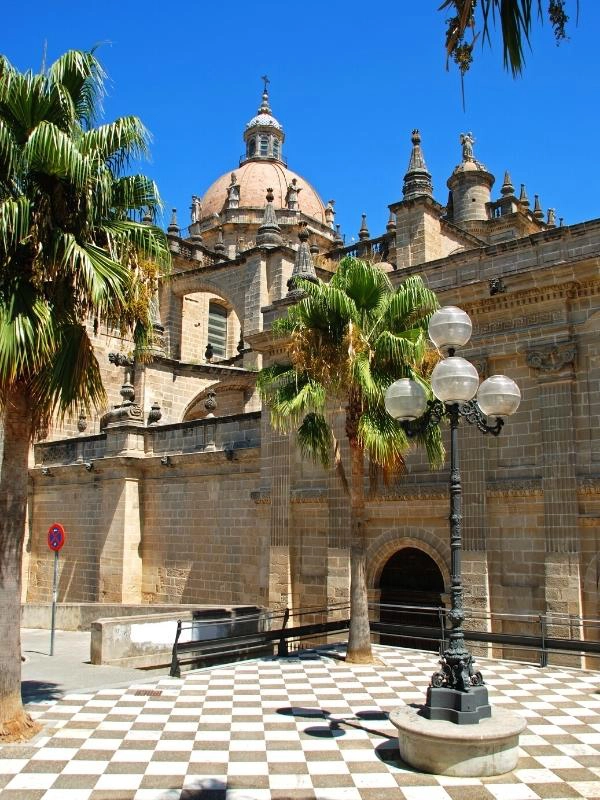
La Rabida
Head north for Christopher Columbus history in La Rábida, where you can see life-sized replicas of the ships he sailed across the Atlantic for the New World (and they are tiny) and the Monasterio de Santa María de la Rábida, where the explorer stayed as he was preparing for the trip.
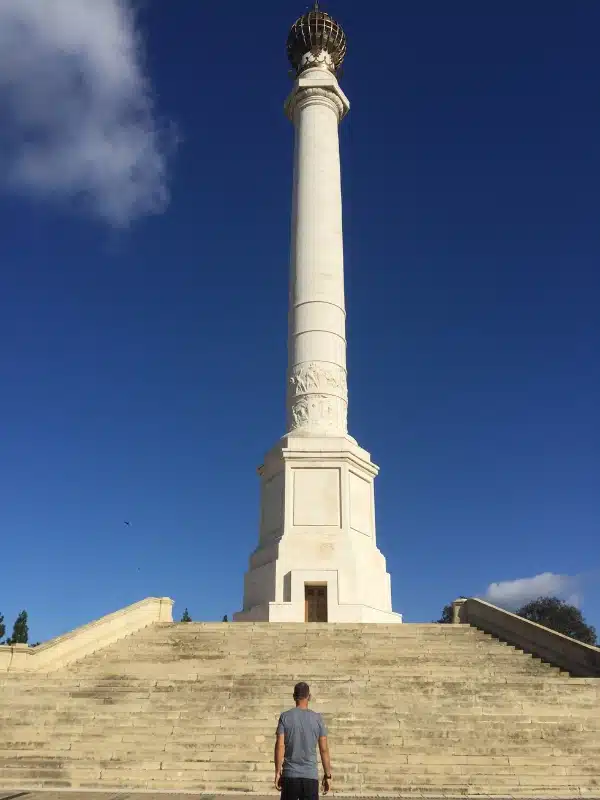
Nightlife in Tarifa
As evening falls, Tarifa’s nightlife begins with serene sunset gatherings at beach bars, transitioning into lively spots like Venice Coctelaria for early drinks with live music, and then onto various bars and clubs that cater to all tastes.
Key venues include La Ruina (the only club open all year) for DeepHouse fans and Mombassa for late-night dancing, with the industrial area offering clubs for hardcore TechHouse enthusiasts.
Despite its narrow streets, Tarifa maintains a safe, communal vibe, with easy access to food and drinks, ensuring a night of continuous movement, shared experiences, and a sense of community.

Where to Eat in Tarifa
Our favorite breakfast haunt is Element Café on the main road into Tarifa, serving healthy (mainly!) and tasty breakfasts. Try the banana, peanut butter, walnut, and chocolate toast!
Or head for the lively old town of Tarifa where you will find a great variety of cafés and bars. Chocolate y churros and tostada are big on the breakfast menu here.
Later in the day, try some tapas with a glass of chilled dry white wine or a cold beer for lunch. There are so many places to eat in Tarifa town it’s hard to pick out the best restaurants …in fact, we’ve never had a meal in Tarifa we didn’t enjoy and all our eating experiences have been excellent value for money, especially when you choose local dishes made with seasonal ingredients.
If you’re heading out for dinner, don’t forget that it will be very quiet until 9pm at the earliest, most Spanish don’t eat until at least 10pm. To bridge the gap between lunch and a late dinner, the Spanish usually have what is called merienda, or snack in the late afternoon. This is usually a sweet snack with coffee, but could also be a bocadillo, a Spanish sandwich, or a filled bread roll.
Local foods to try include Iberico Jamon, which is cured ham; bluefin tuna caught off the coast as they cross from the Atlantic to the Mediterranean; boquerones, which are fresh anchovies marinaded in vinegar and olive oil; slow roasted pork belly, a specialty of Cadiz; and pescaito frito, fish and seafood like prawns, squid, anchovies and chunks of cod, all of which are deep-fried in a light batter then doused in salt and lemon juice.
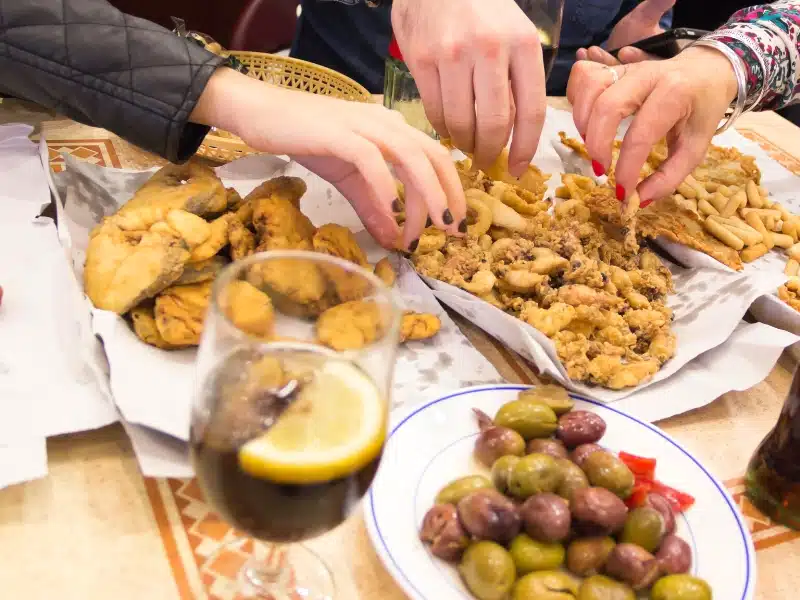
Where to Stay in Tarifa
For a spot of luxury in a fantastic location, our favorite Tarifa hotel is Hotel and Spa La Residencia Puerto with its central location, gorgeous turquoise-themed decor, and heated infinity pool with views across the Strait to Morocco.
In the mid-range, we enjoyed the legendary Hotel Hurricane just outside town. With spectacular sunset views over the Atlantic Ocean, lush gardens, simple but beautiful rooms, and a beachside location, this is a great spot for your Tarifa holiday.
Staying in this price range but with an old town location, Silos19 Suites offers beautiful rooms in its 18th century building. There’s also a cool roof terrace, an intimate bar, and an excellent restaurant, making this a top Tarifa pick.
If you’re on a budget, then check out Dori Rooms Hostal, located centrally and close to Los Lances Beach. Dori offers bright, clean, and airy rooms with everything you need for your stay – they even provide a fridge and kettle which is a rarity in Spain!
Are you looking for more travel inspiration? Check out these top posts…
Stelvio Pass: The Best Mountain Road in Italy?
Monte Cassino: How to Visit the Abbey & War Graves
La Bambouseraie: How to Visit the Hidden Gem in Anduze
Blue Eye Albania: Visit Sarandë & Theth Natural Pools
A Road Trip From Melbourne: Discovering the Magic of the Great Ocean Road
32 of the Very Best Things to Do in the Netherlands
Love it? Pin it!
